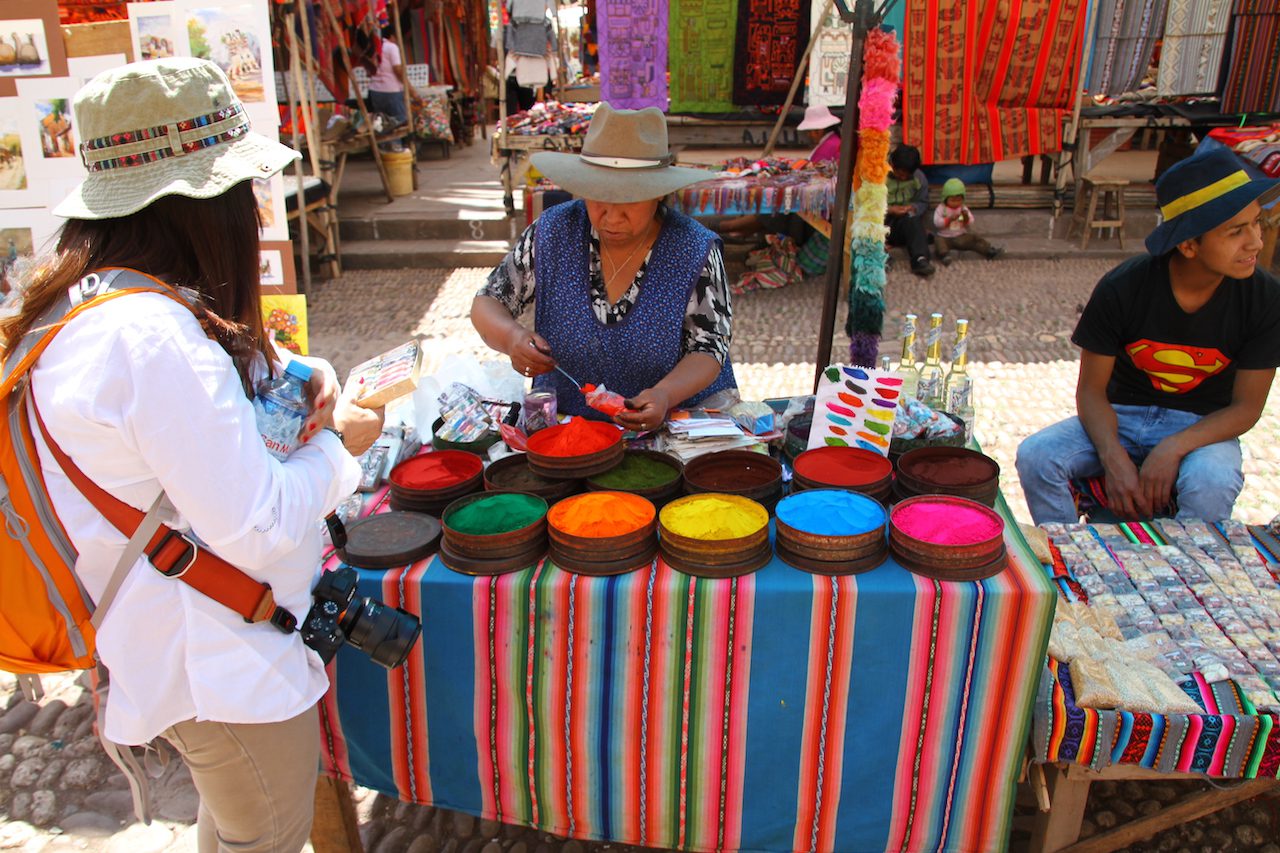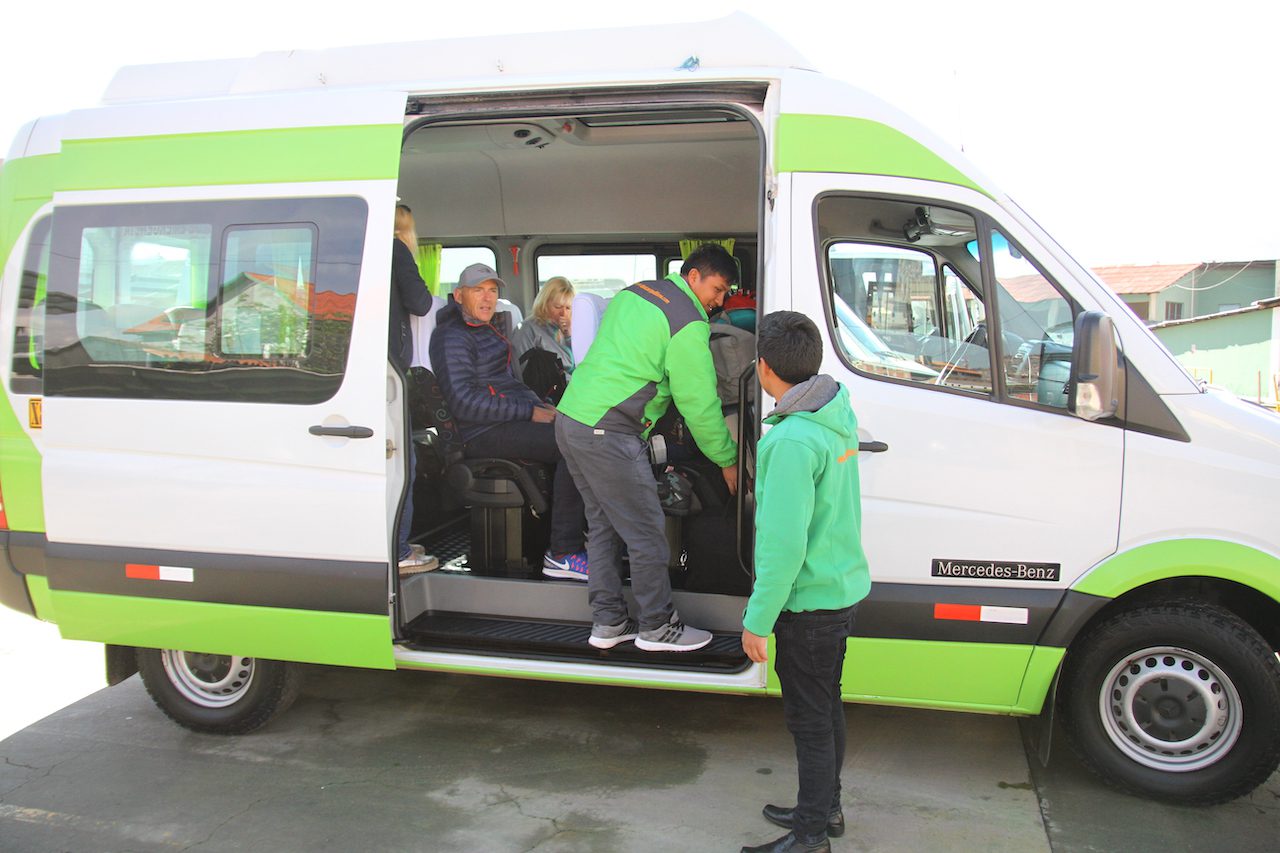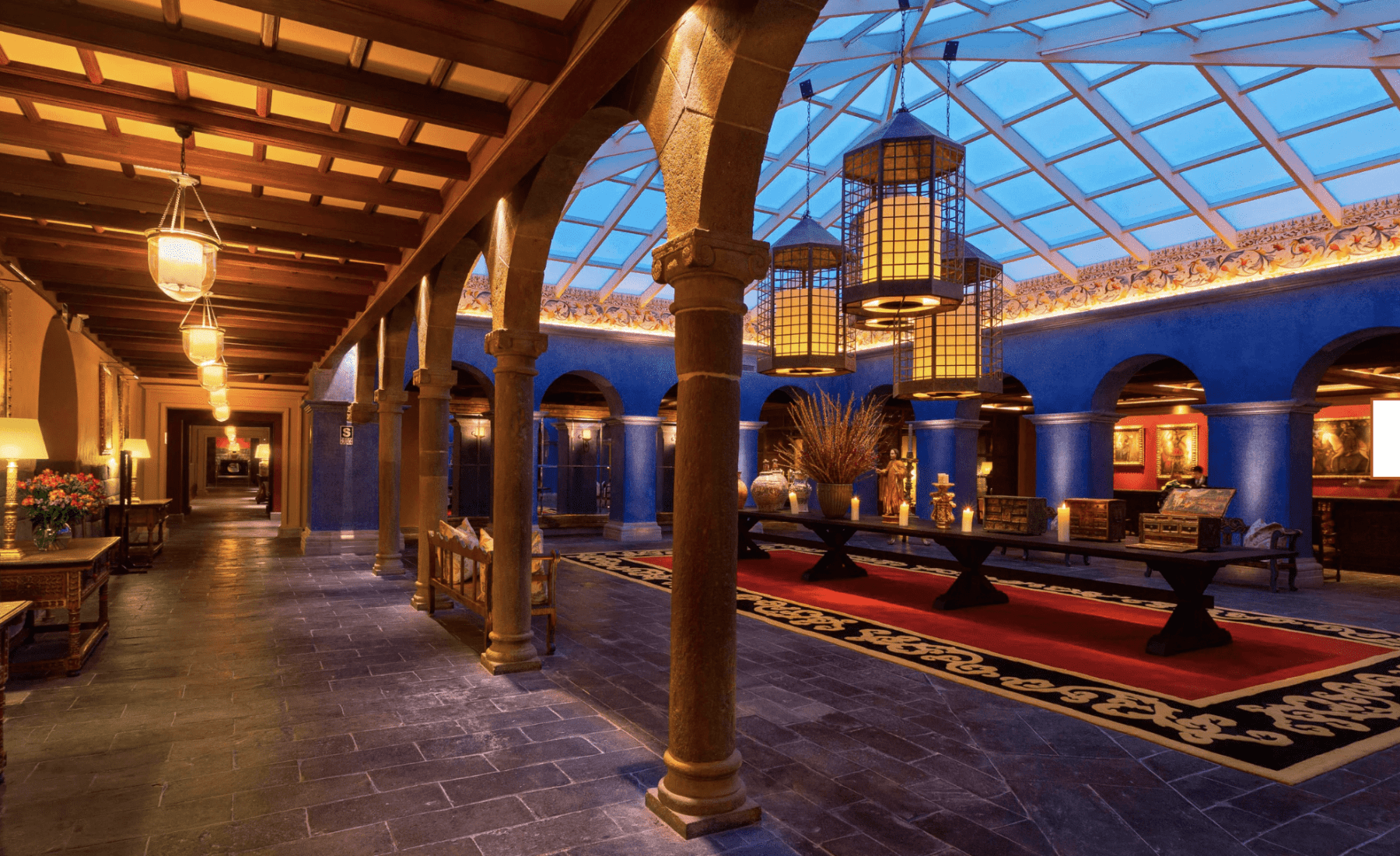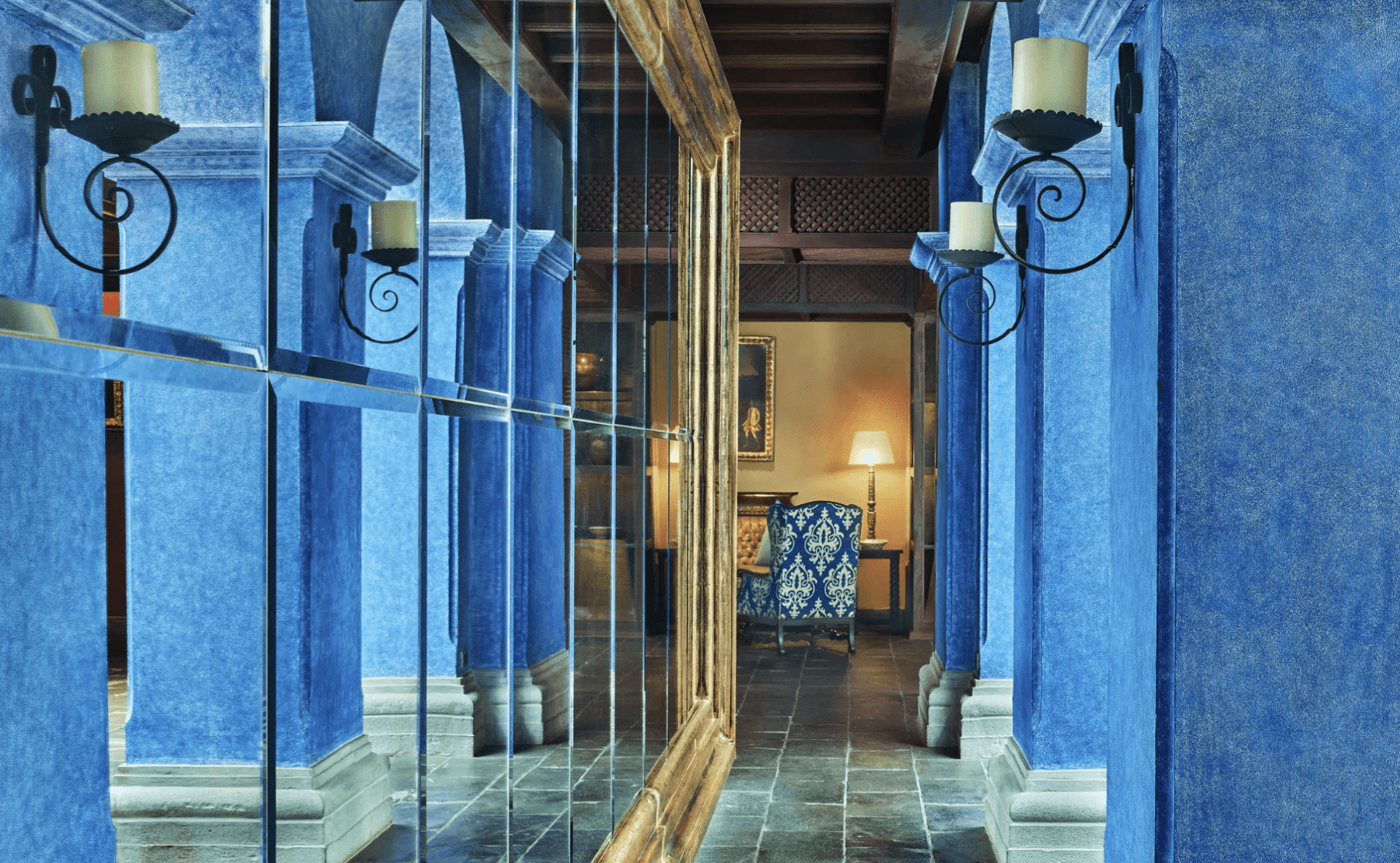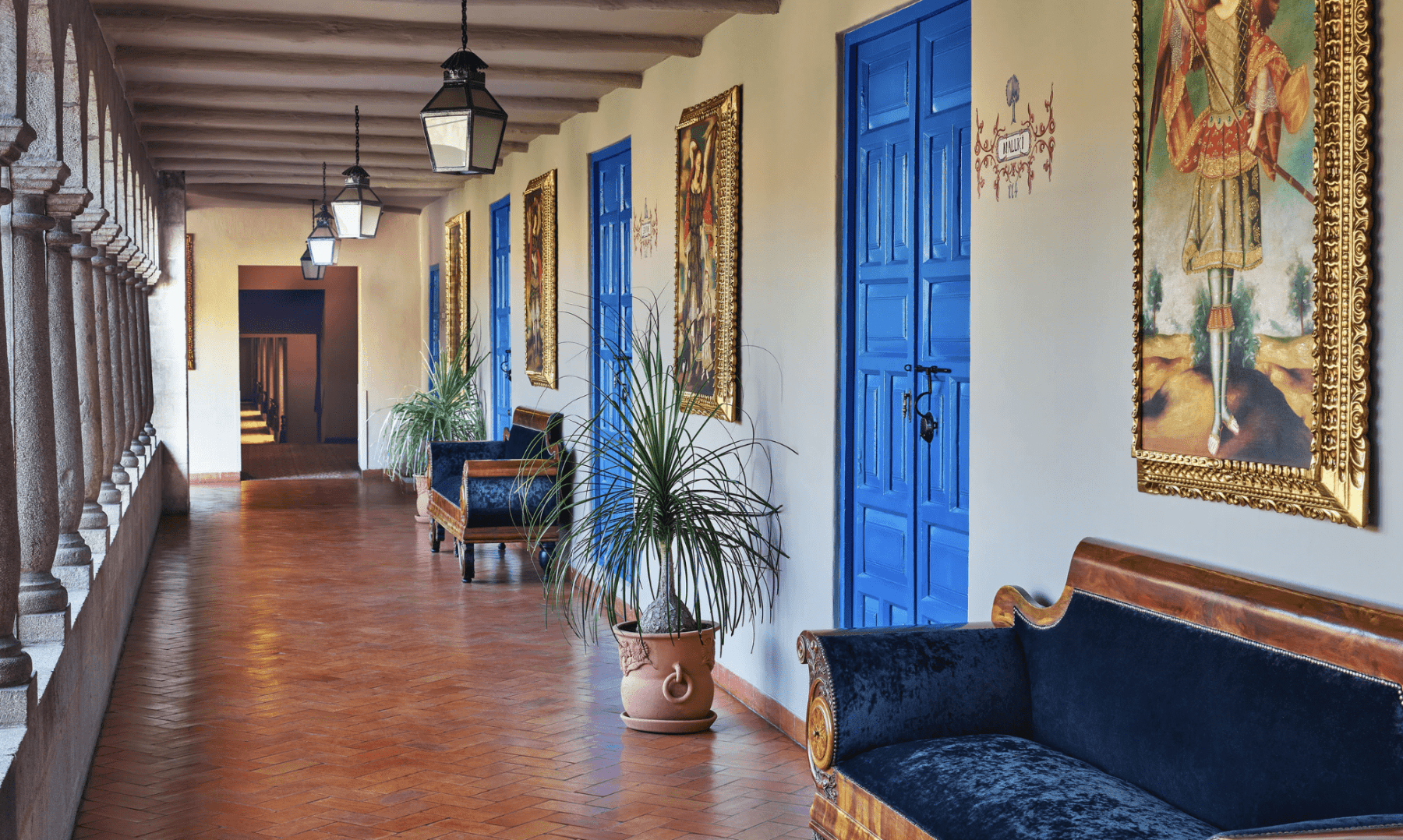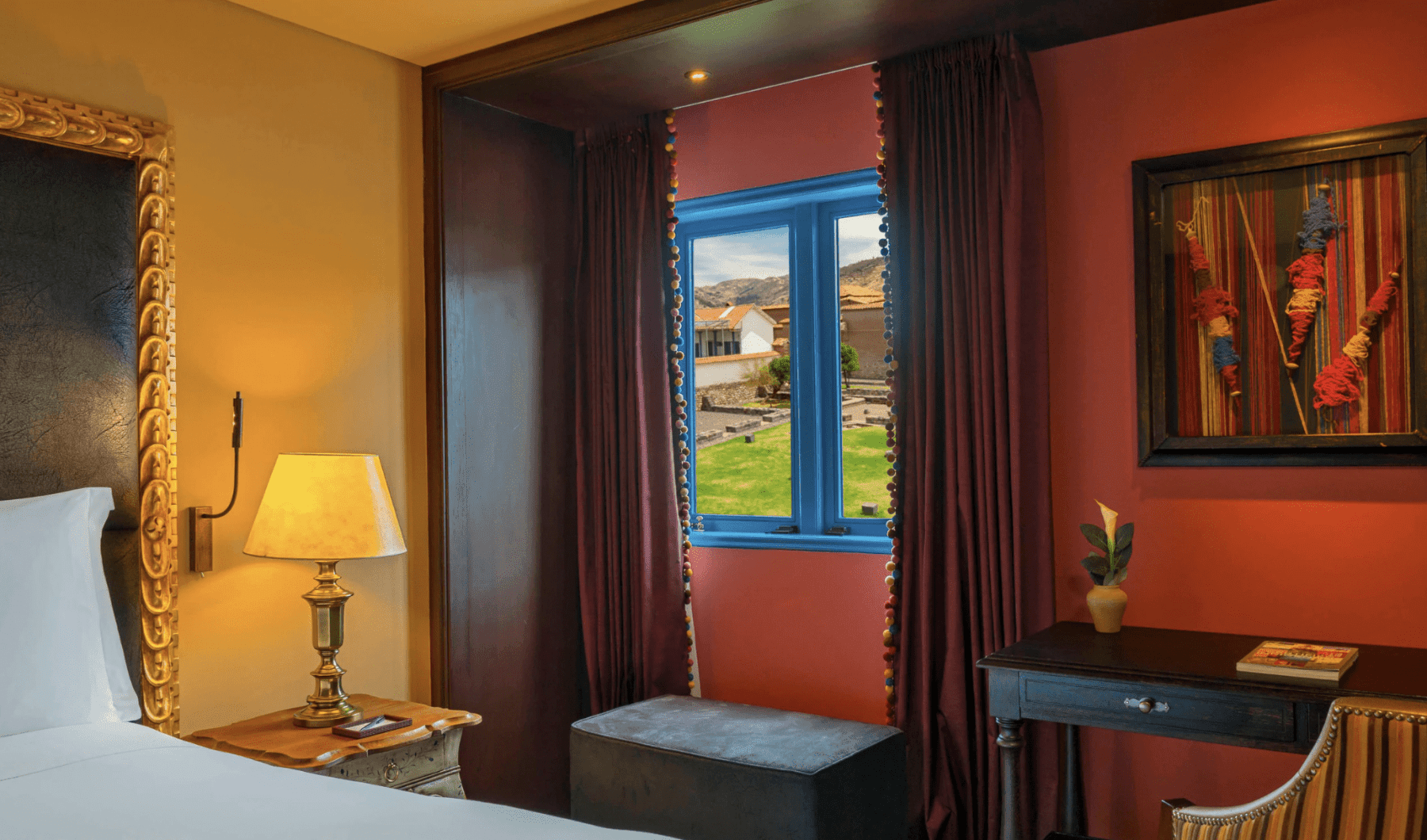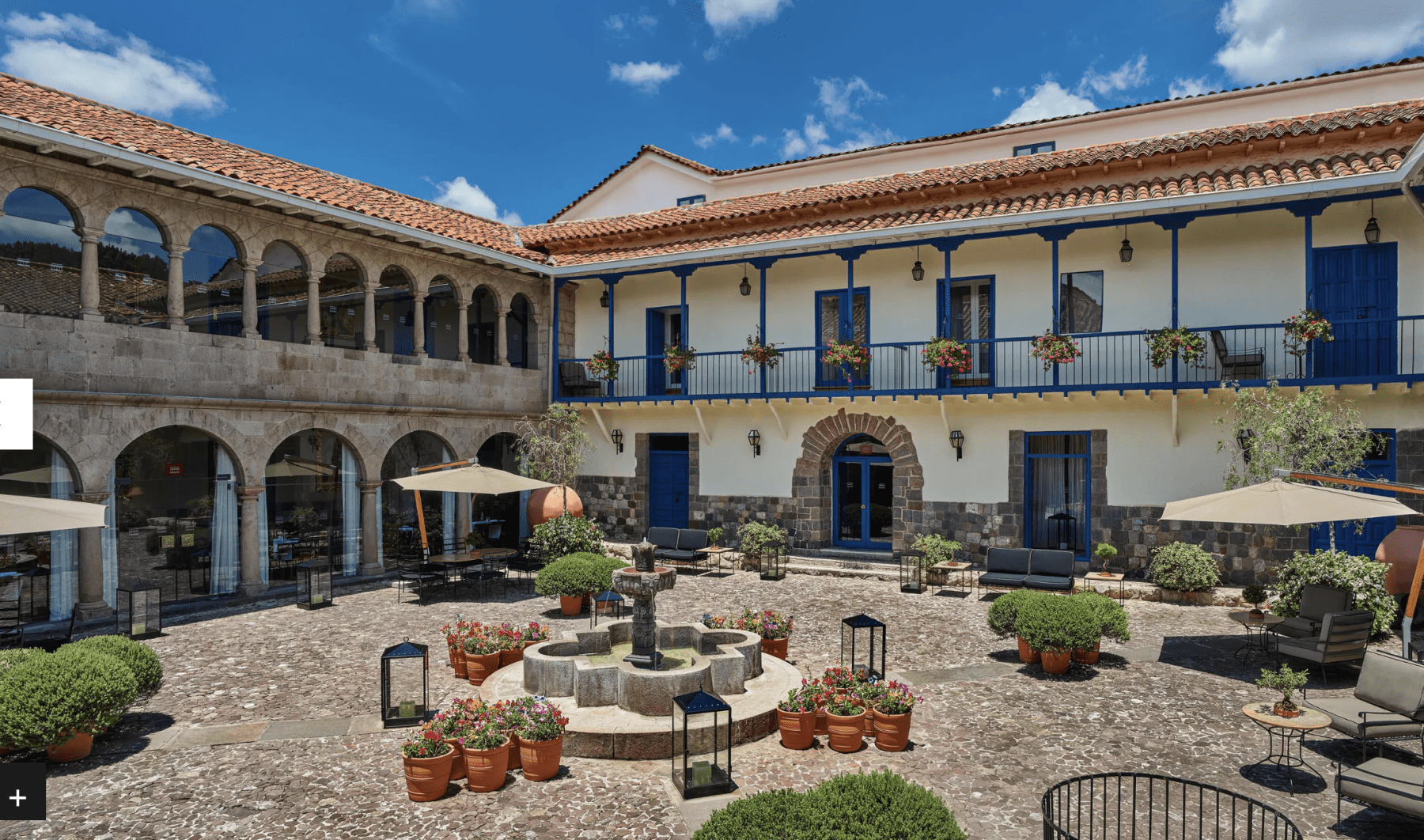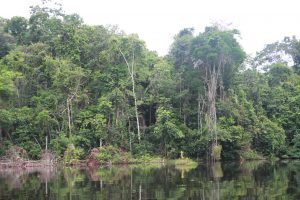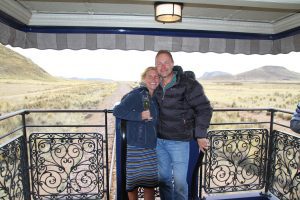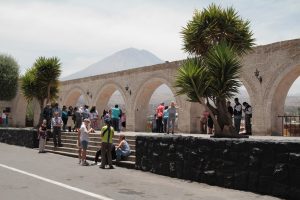🙂 AMAZING hotel – the barman gave us pisco sour lessons. Incredible history. Awe inspiring creativity of the Inca.
🙁 Don’t like being taken to tourist places and pressured to buy things we do not want!
We woke up at 04h45 and arrived early in Cusco. The train team clapped us off the platform and we were met by Alpaca who waited for us to check in at the splendid Palacio del Inka. This is a five-centuries-old mansion located in the heart of downtown Cusco embracing historical aspects of Peruvian culture while maintaining luxury with stone archways, authentic Hispanic art, and ornate gilded antiques. Each room fashioned with traditional colonial decor and a rich colour palette evocative of the local Peruvian heritage. The hotel is directly opposite the Koricancha, “Temple of the Sun.”
I had a very bad tummy so we quickly stopped off to buy some antibiotics from a chemist. Stopped off for a vista of Cusco sprawling beneath us.
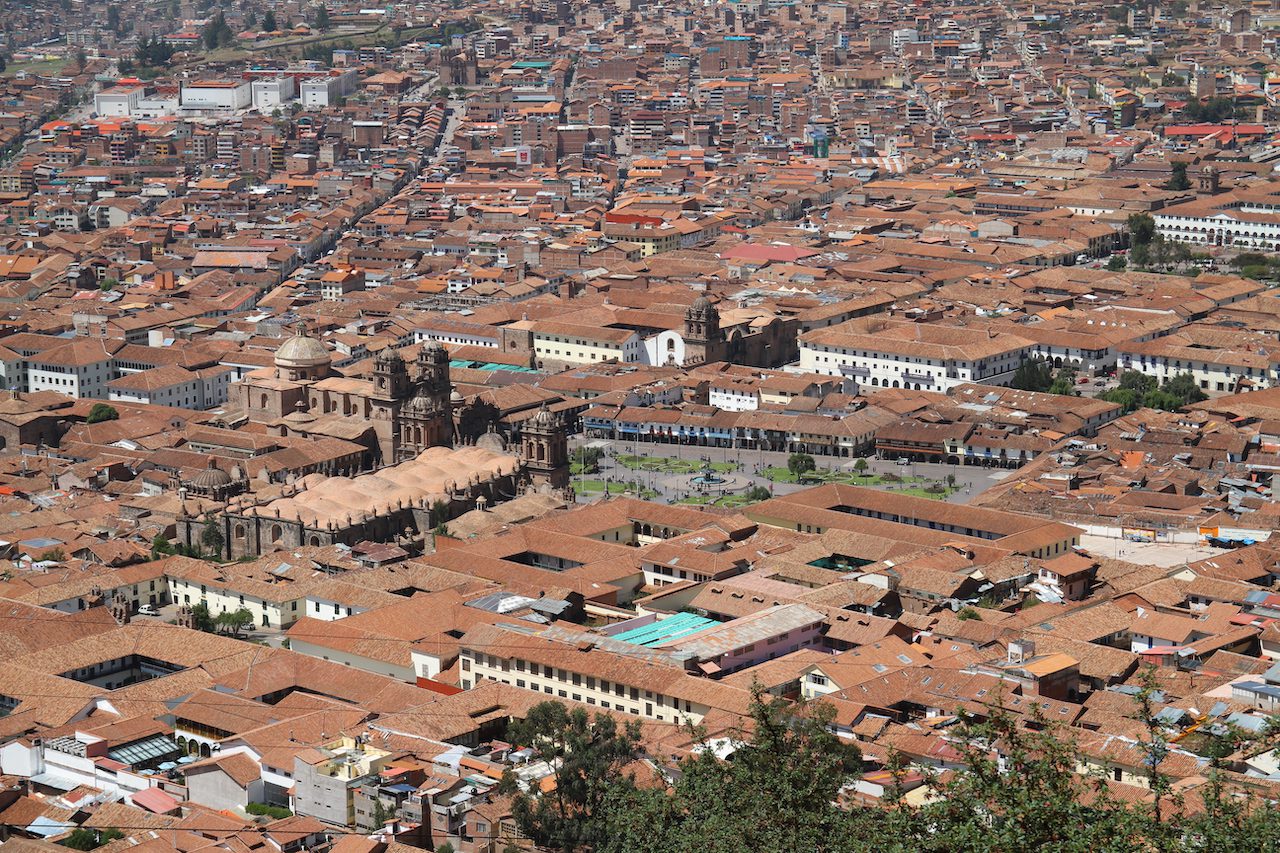
Our guide Reuben was slightly irritating but overall we enjoyed the walking tour of the Sacred Valley, Pisac, the market and Olytambo. We hadn’t really wanted to visit the touristy Alpaca farm where the tour started and which was way too expensive – but I guess it made for some colourful photos…
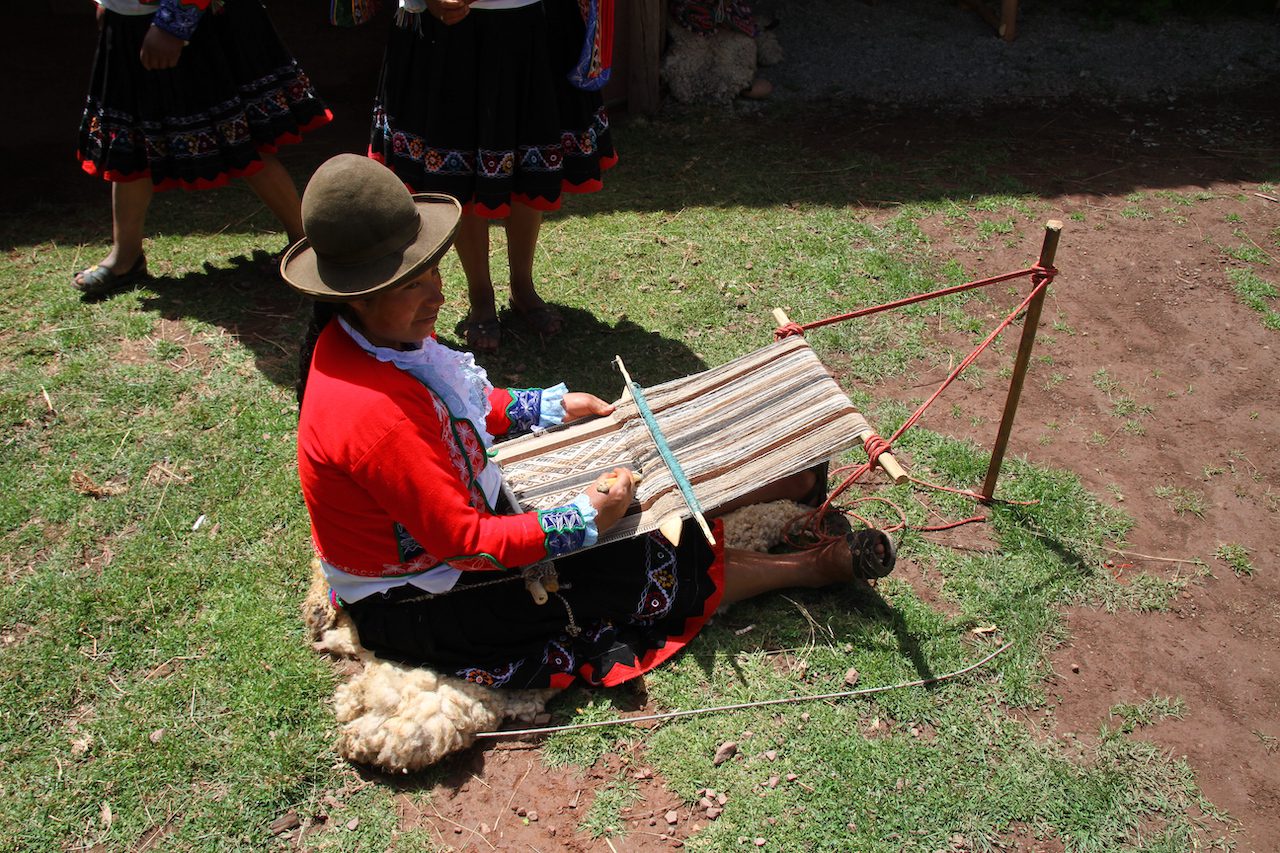
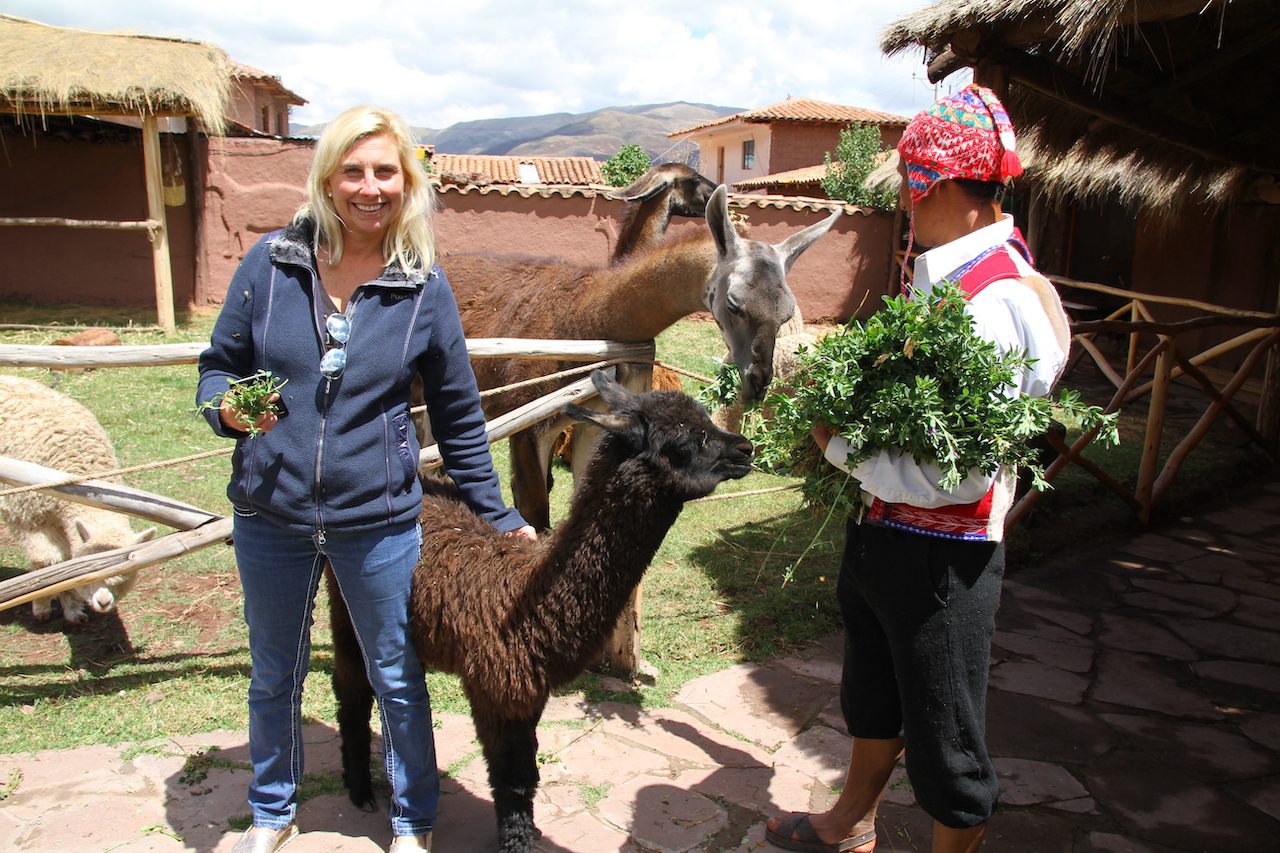
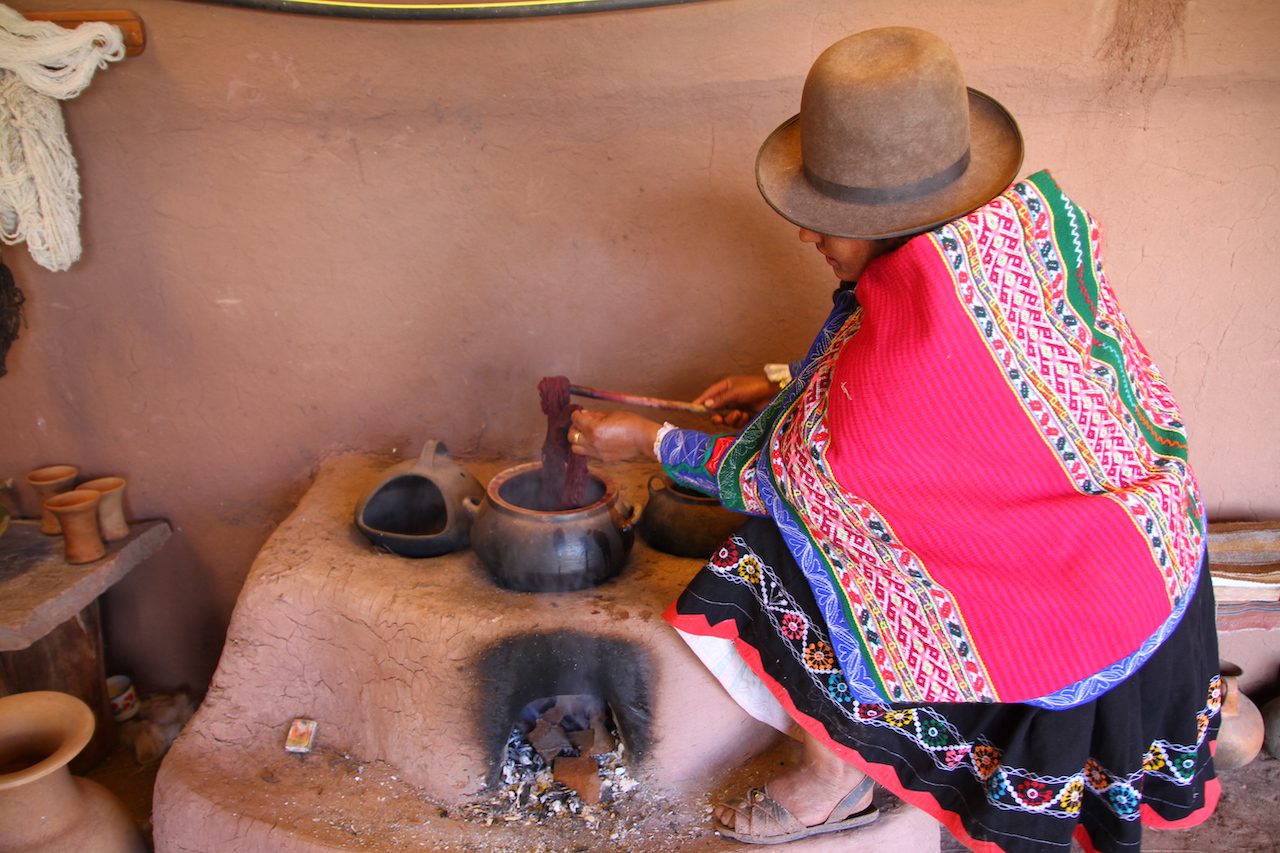
We managed to leave without being fleeced and continued on the road that winds around the mountains north of Cusco. On the way, we stoped at a famous point known as El Mirador (Lookout Point) from where we had good views of the Sacred Valley. The SACRED VALLEY, or Vilcamayo to the Incas, is about 30km northwest of Cusco and traces its winding, astonishingly beautiful course from here down towards Urubamba, Ollantaytambo and eventually Machu Picchu. Within the valley there are several microclimates allowing specialisations in different fruits, maizes and local plants. The river itself starts in the high Andes south of Cusco and is called the Vilcanota river until it reaches the Sacred Valley; from here on downriver it’s known as the Río Urubamba, a magnificent and energetic torrent which flows on right down into the jungle to merge with other major headwaters of the Amazon.
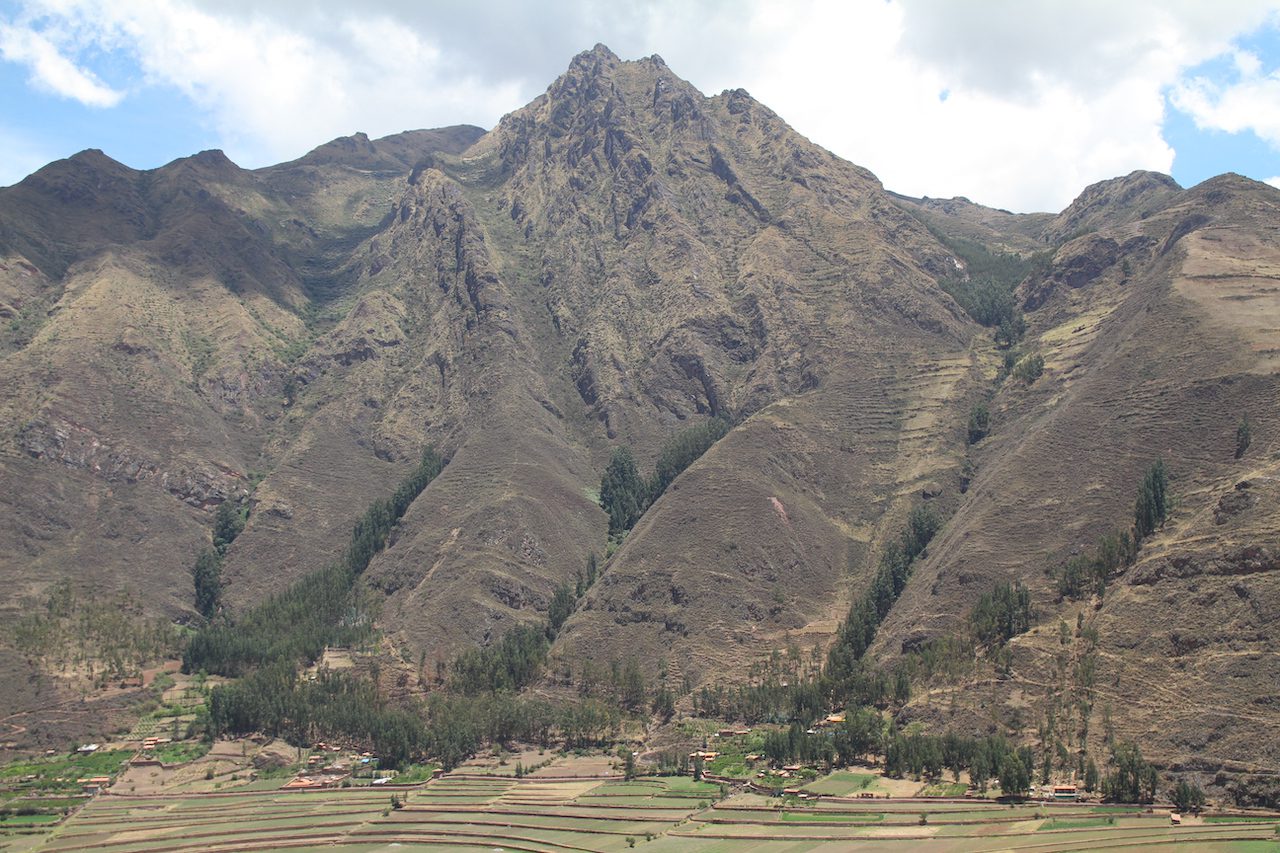
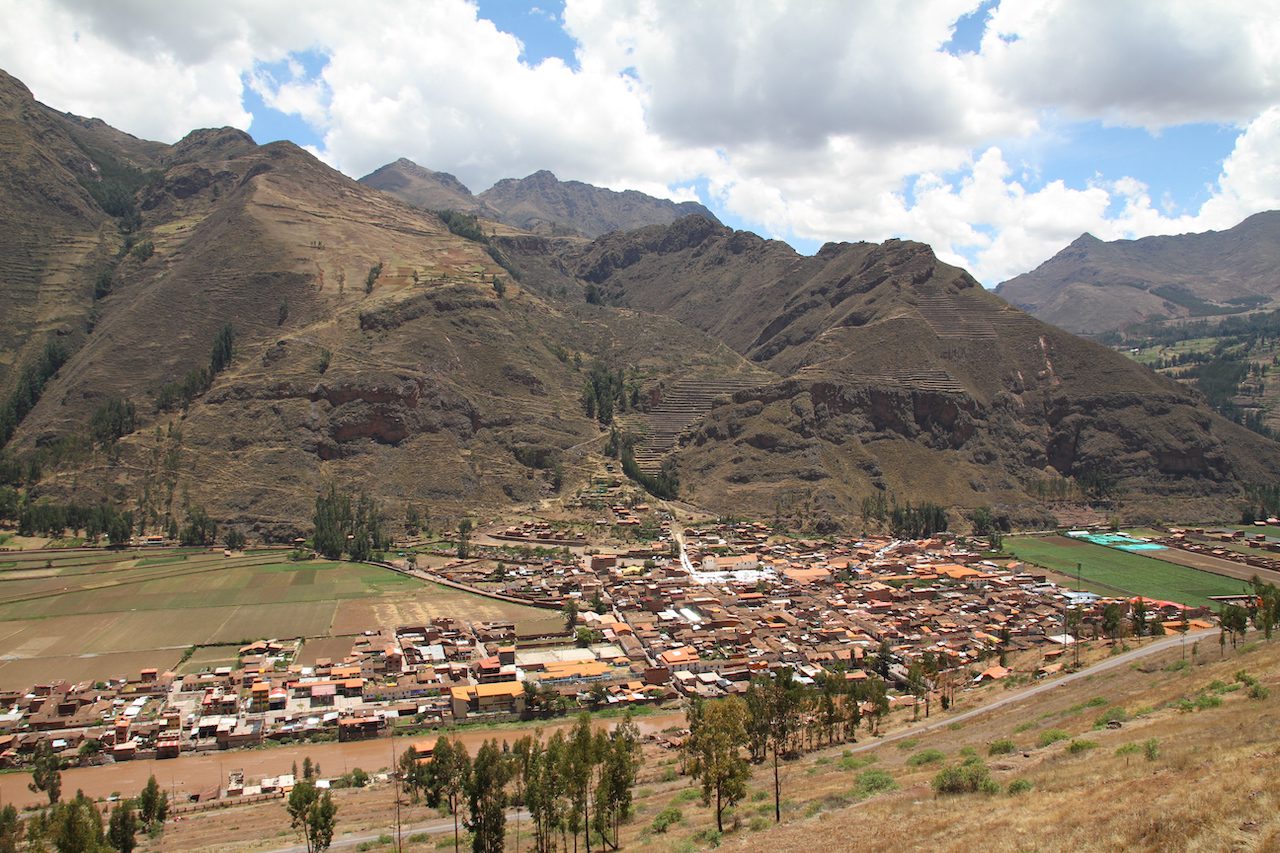
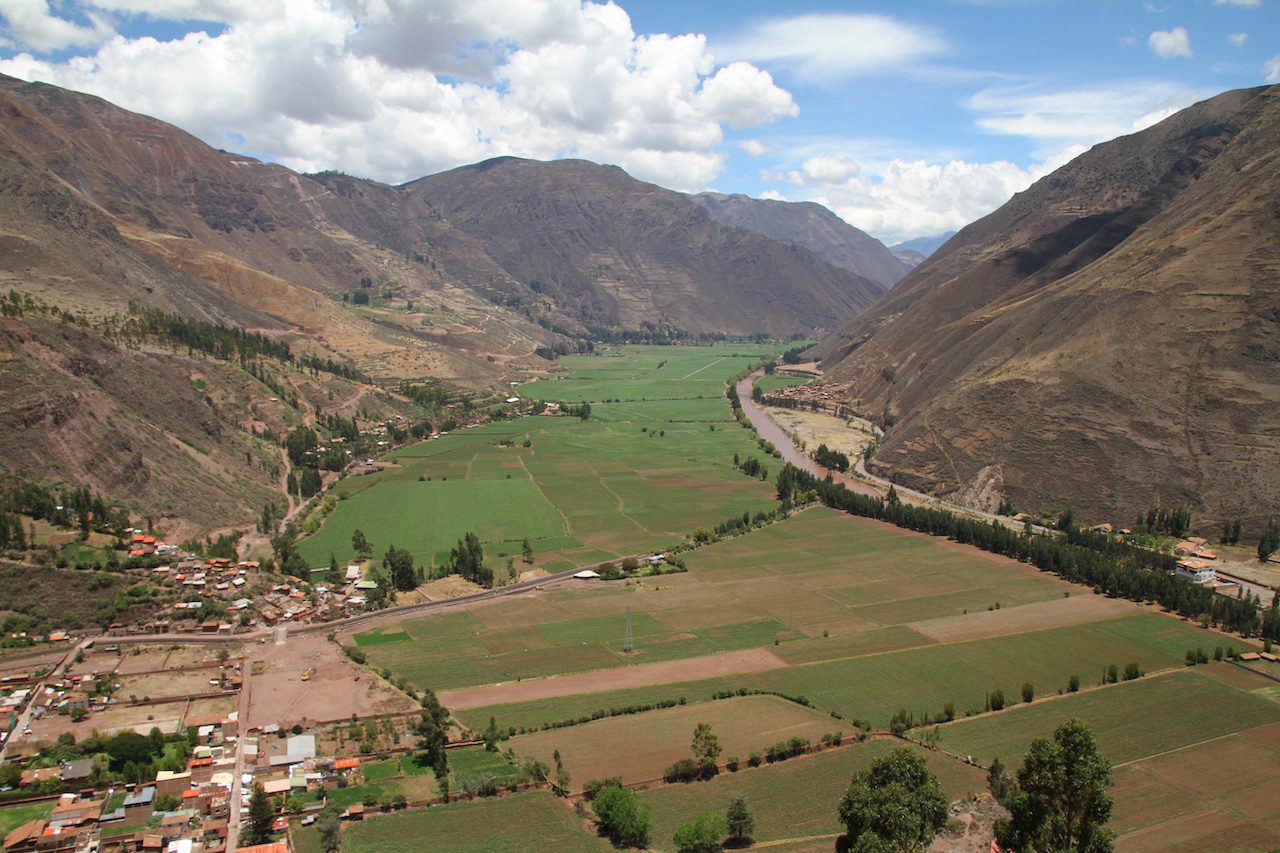
It really was spectacular to see the contoured fertile fields and the river flowing beneath us.
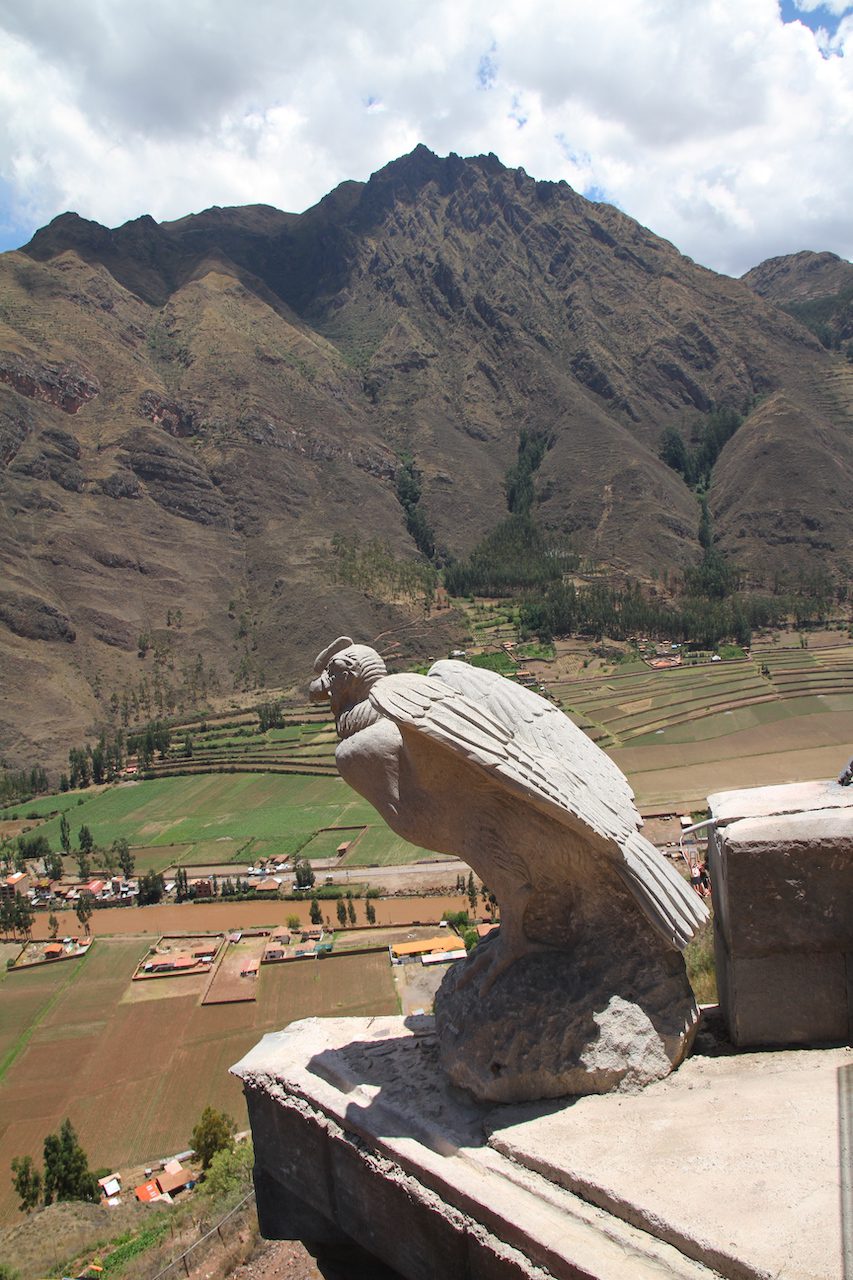
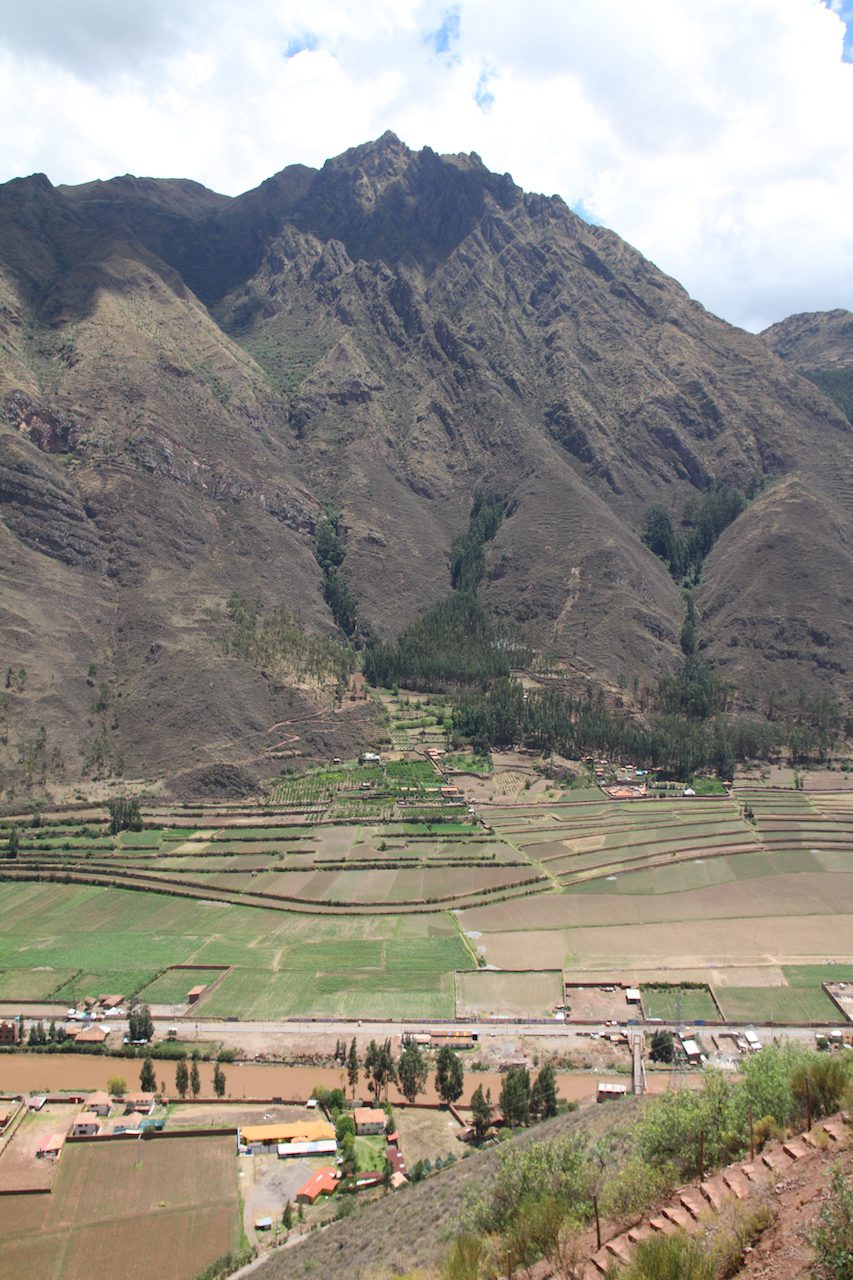
The microclimates within the contoured layers enabled the growth of many different varieties of maize.
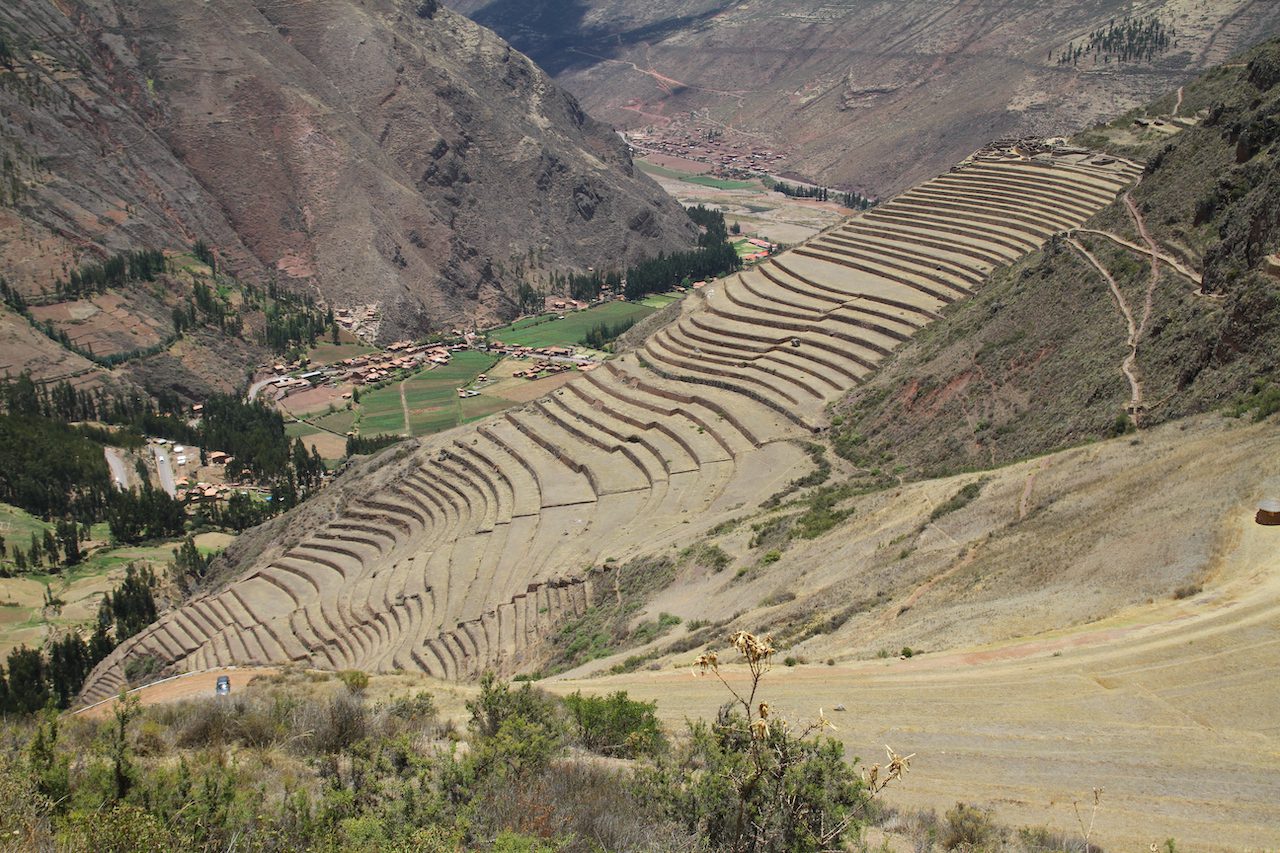
Pisac Ruins: This hilltop citadel towers over the Sacred Valley village of Pisac on a plateau above sweeping agricultural terraces. At the top of the site is the Sun Temple, which contains an abstract, yet significant, carved rock hitching post; this is thought to have symbolically tied the sun as it journeyed across the sky. This was a defensive fortress and military citadel and evidence of baths, alters, fountains etc abounded – fascinating.
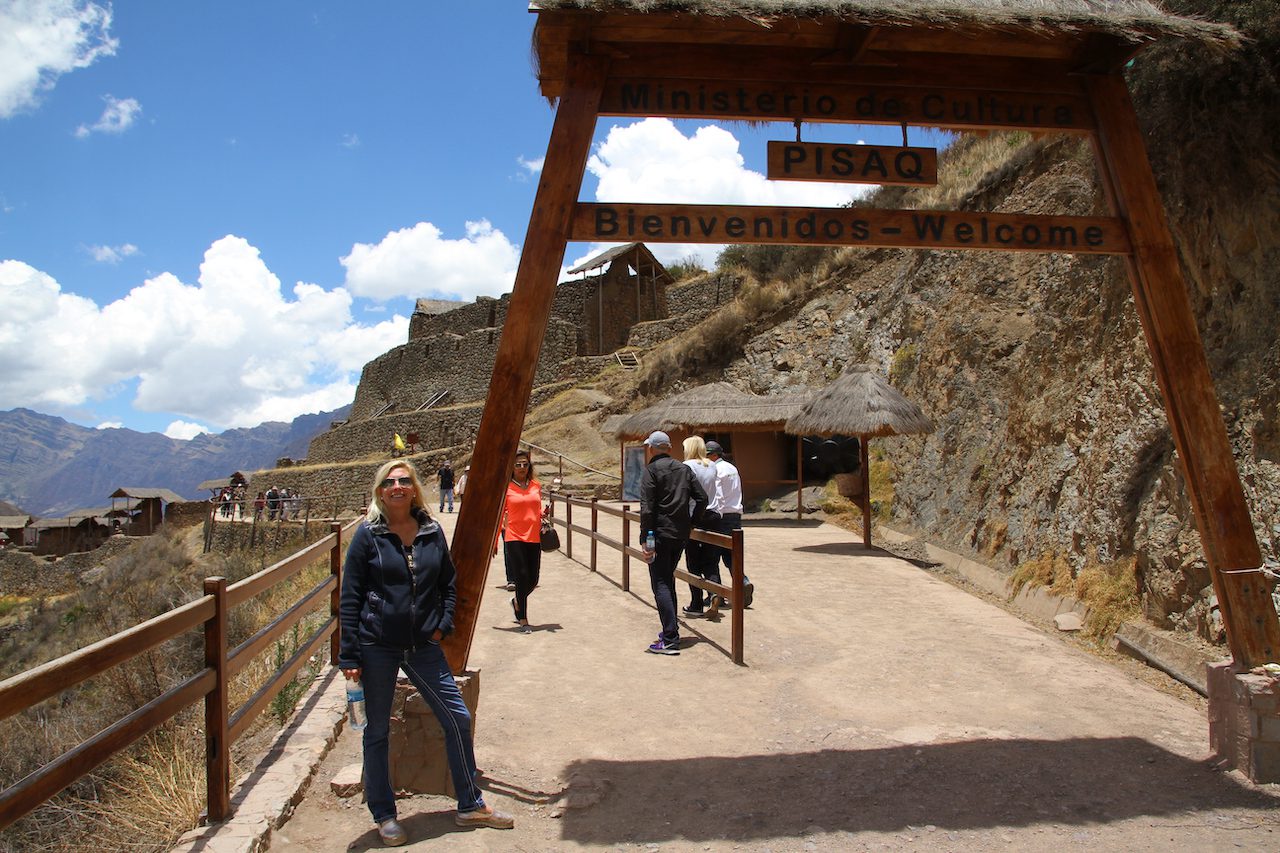
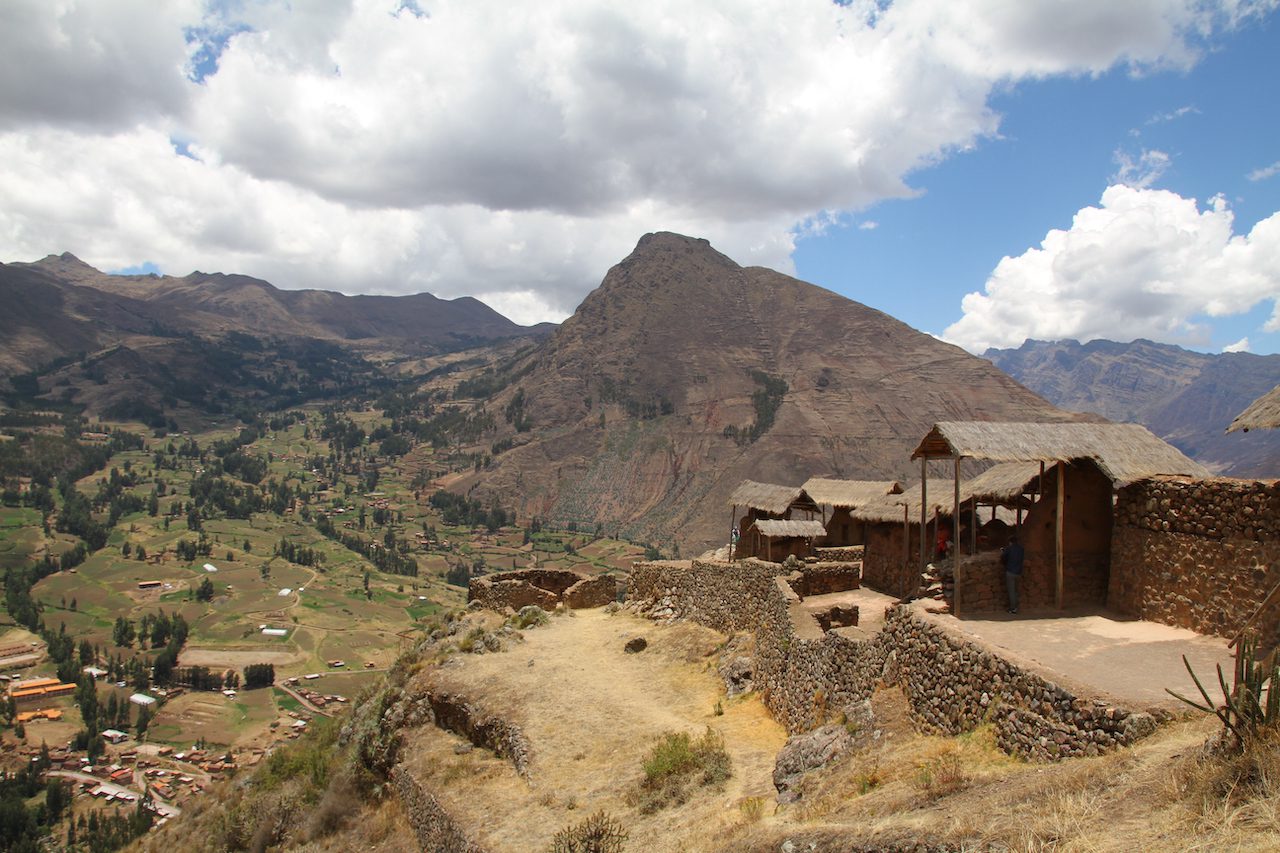

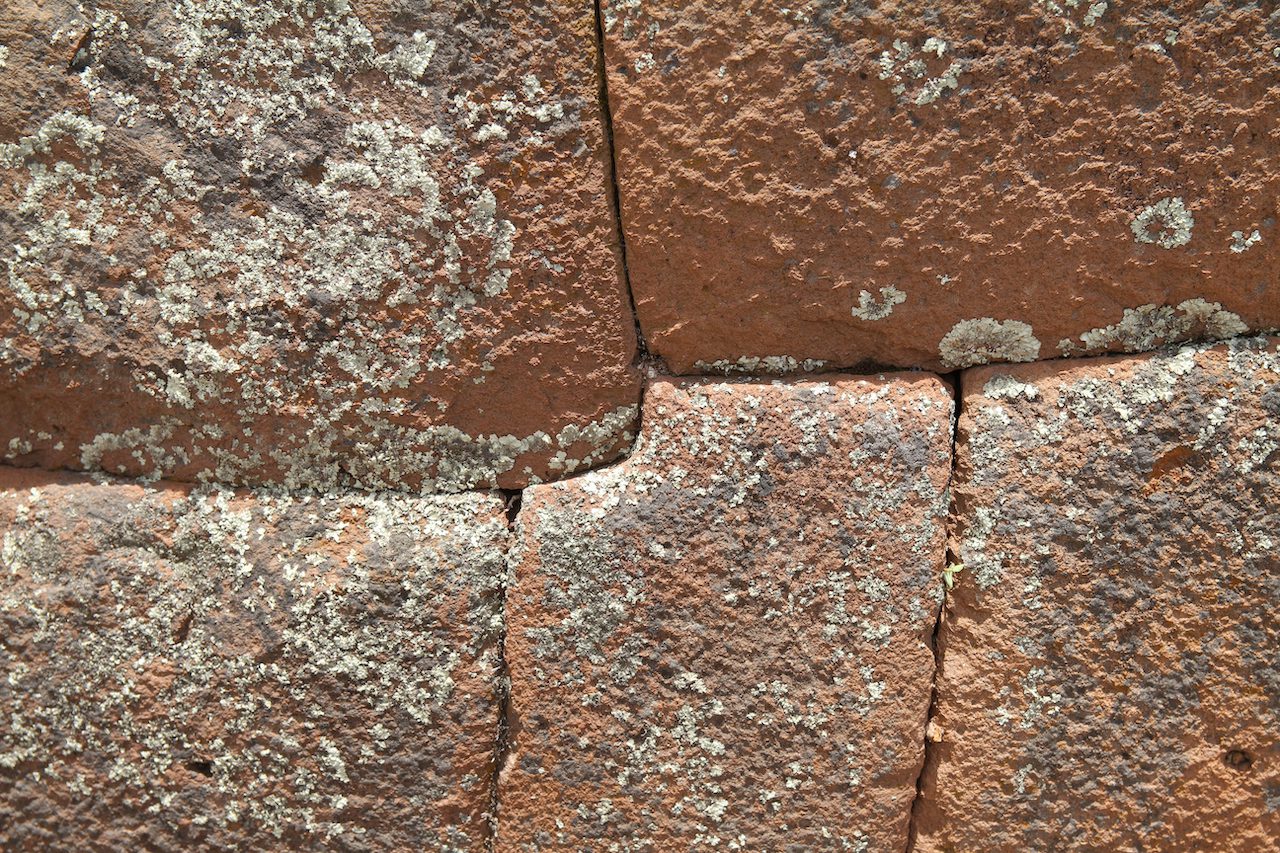
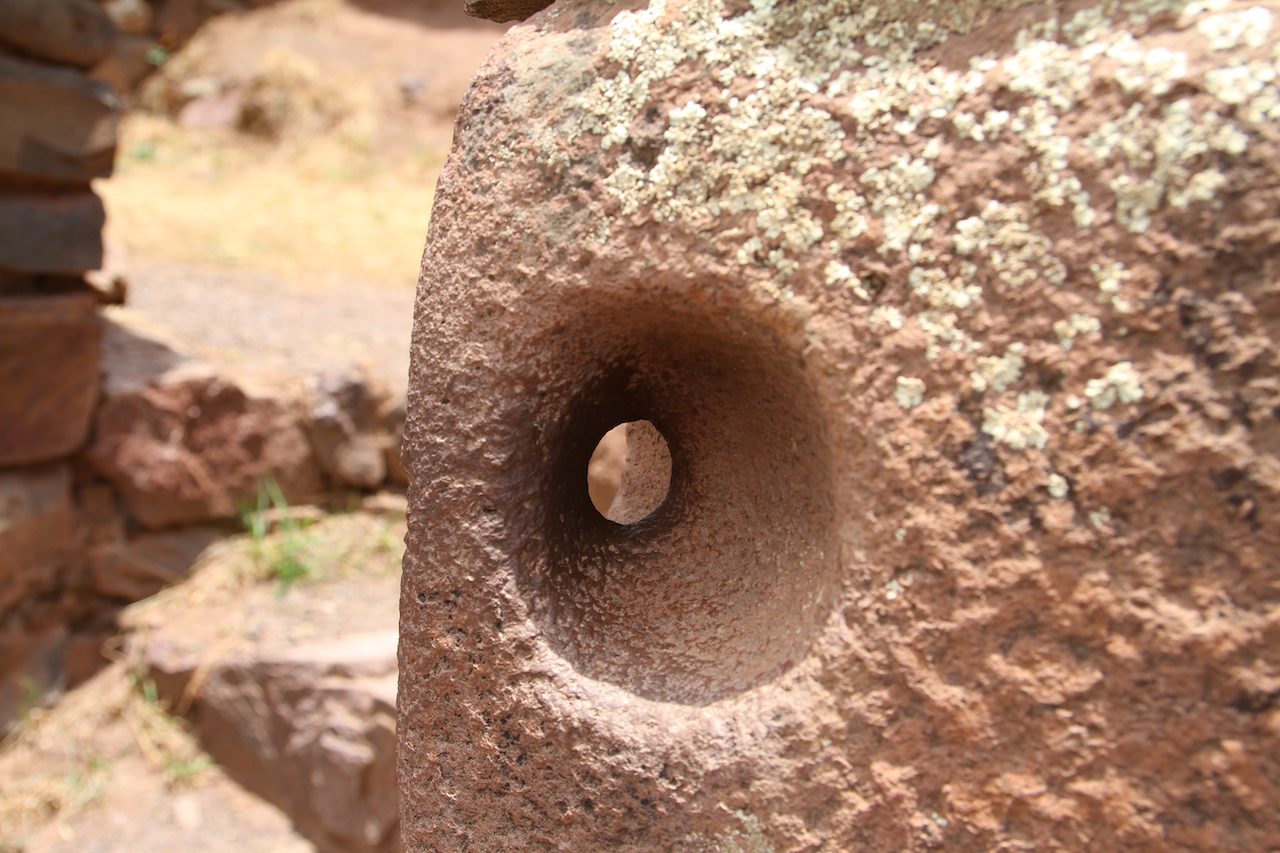
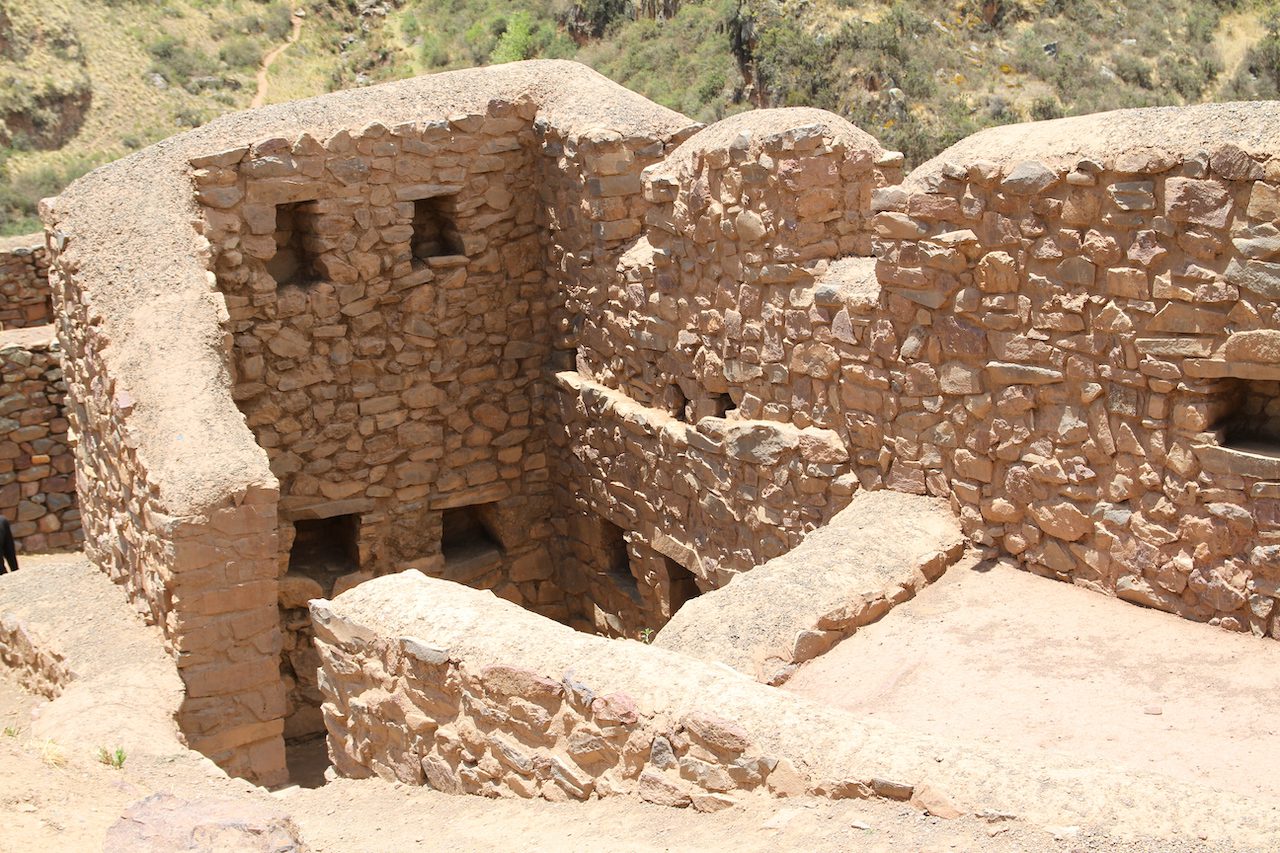
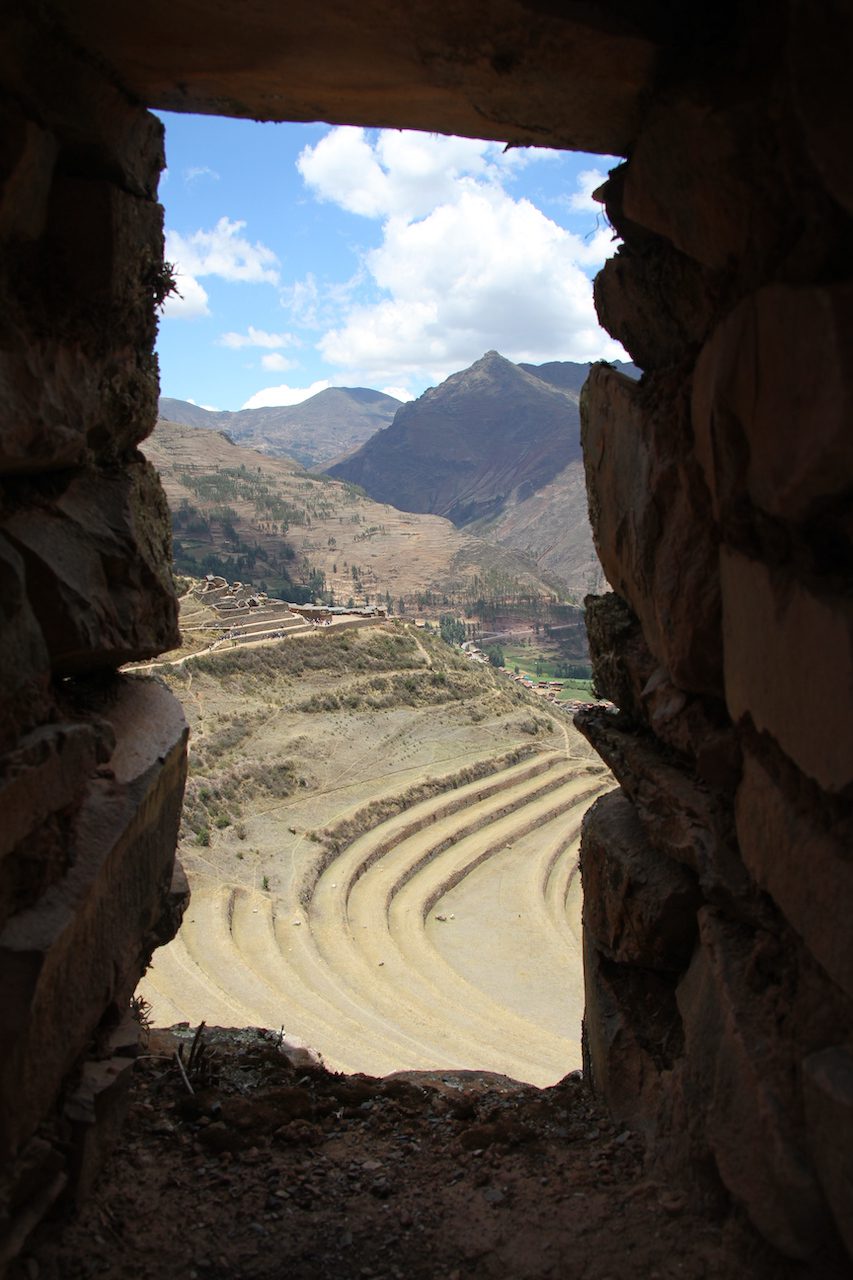
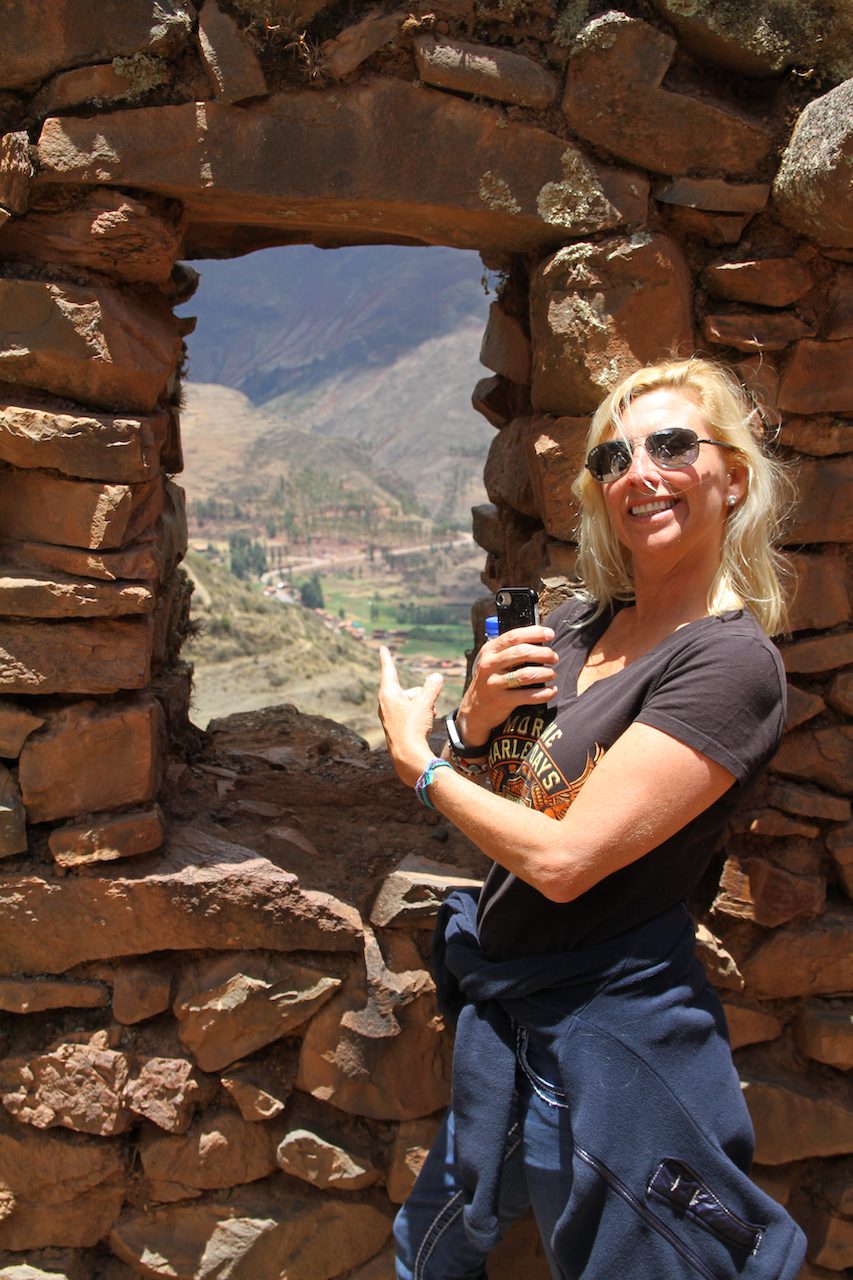
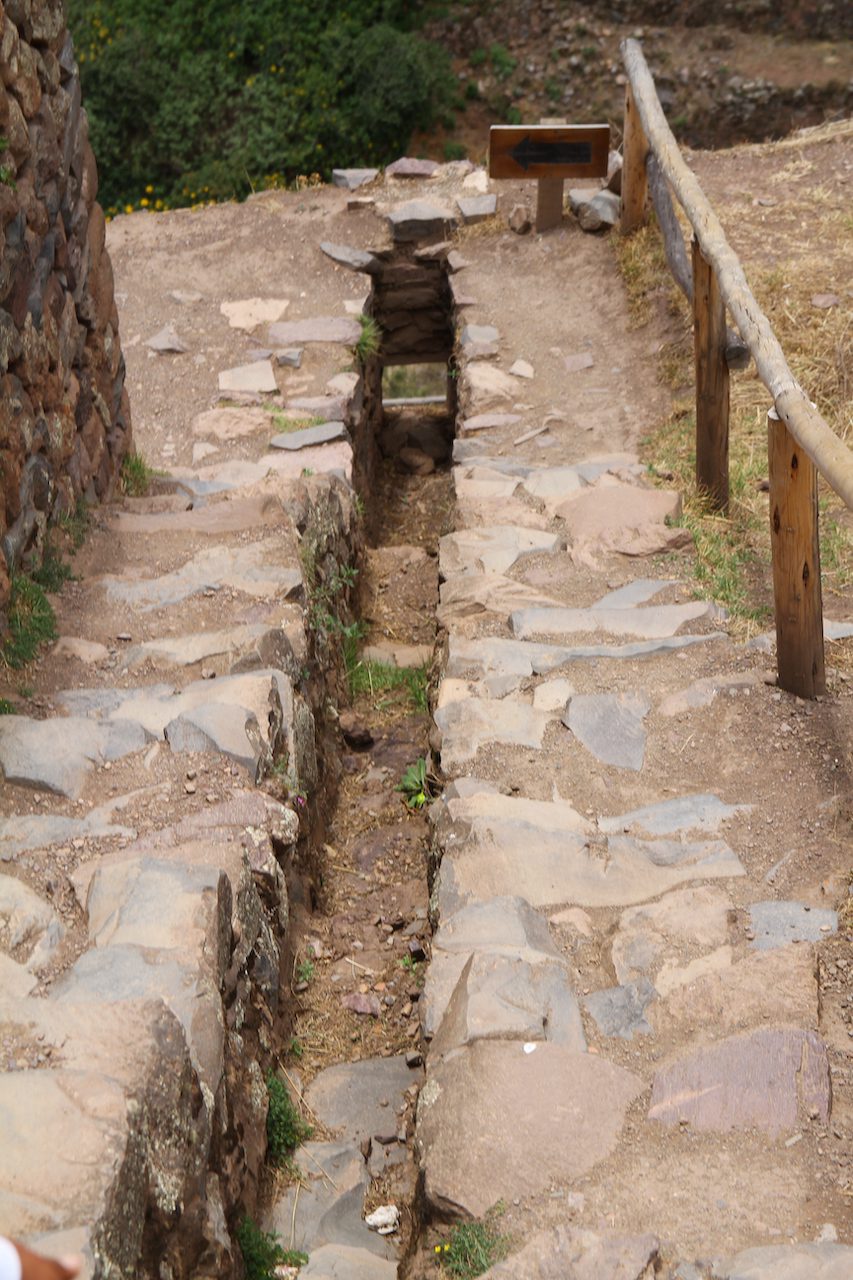
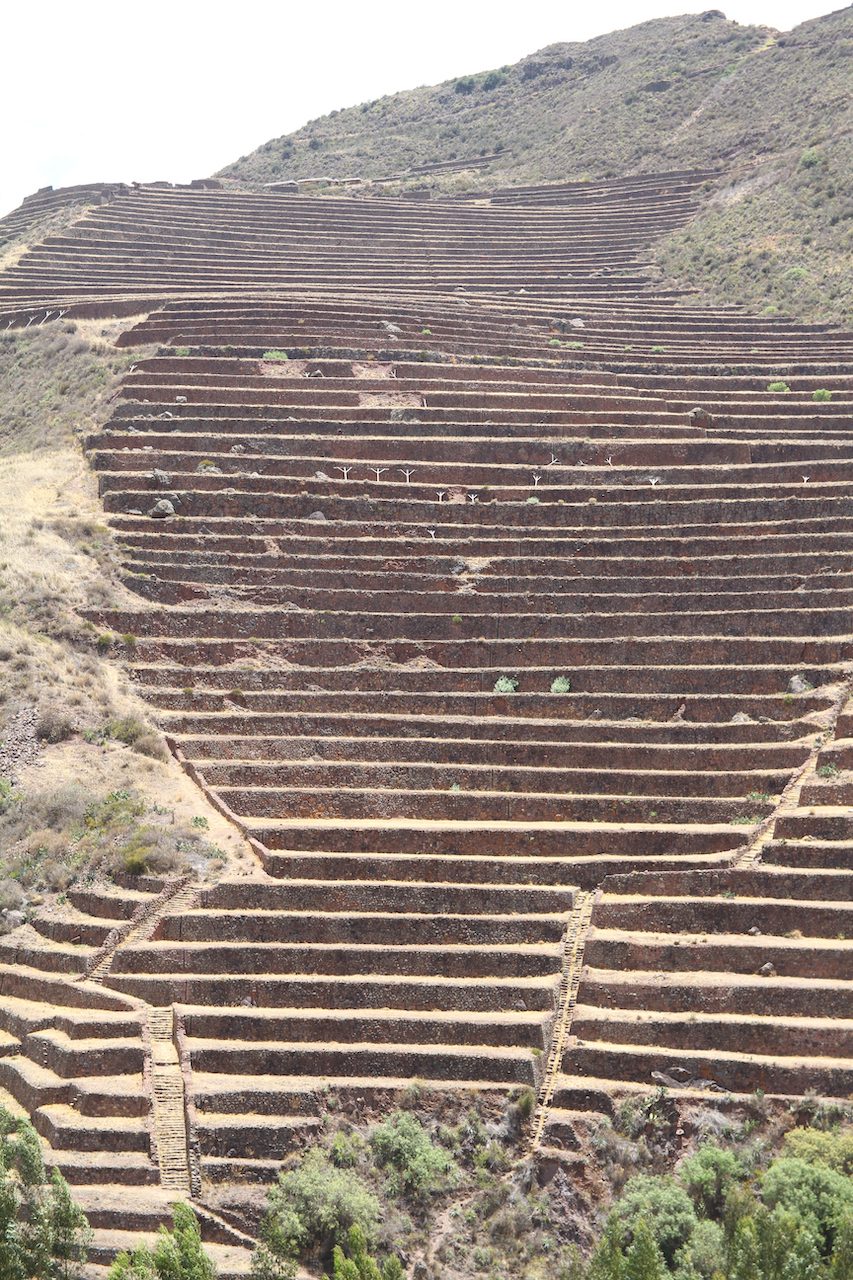
The handycraft market was fun to wander around….but those poor little guinea pigs….
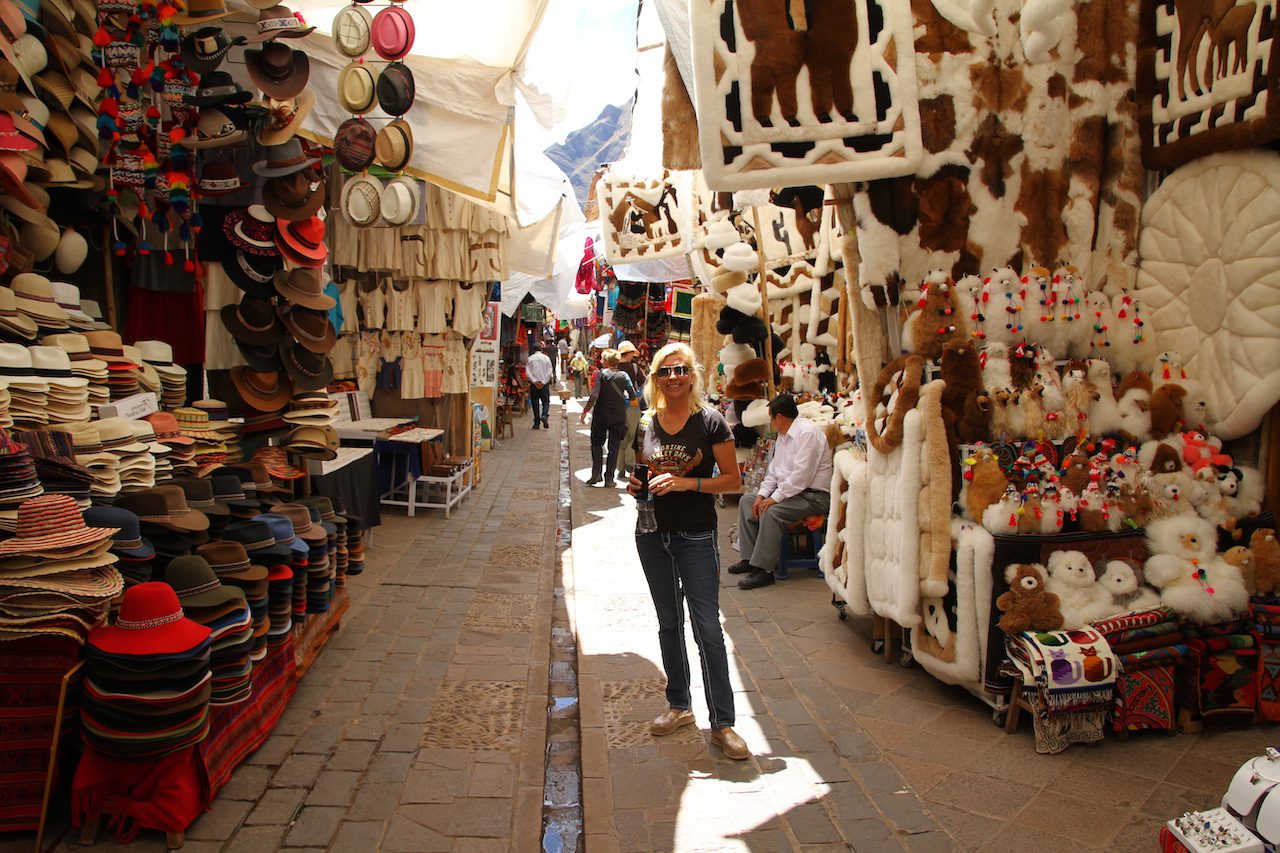
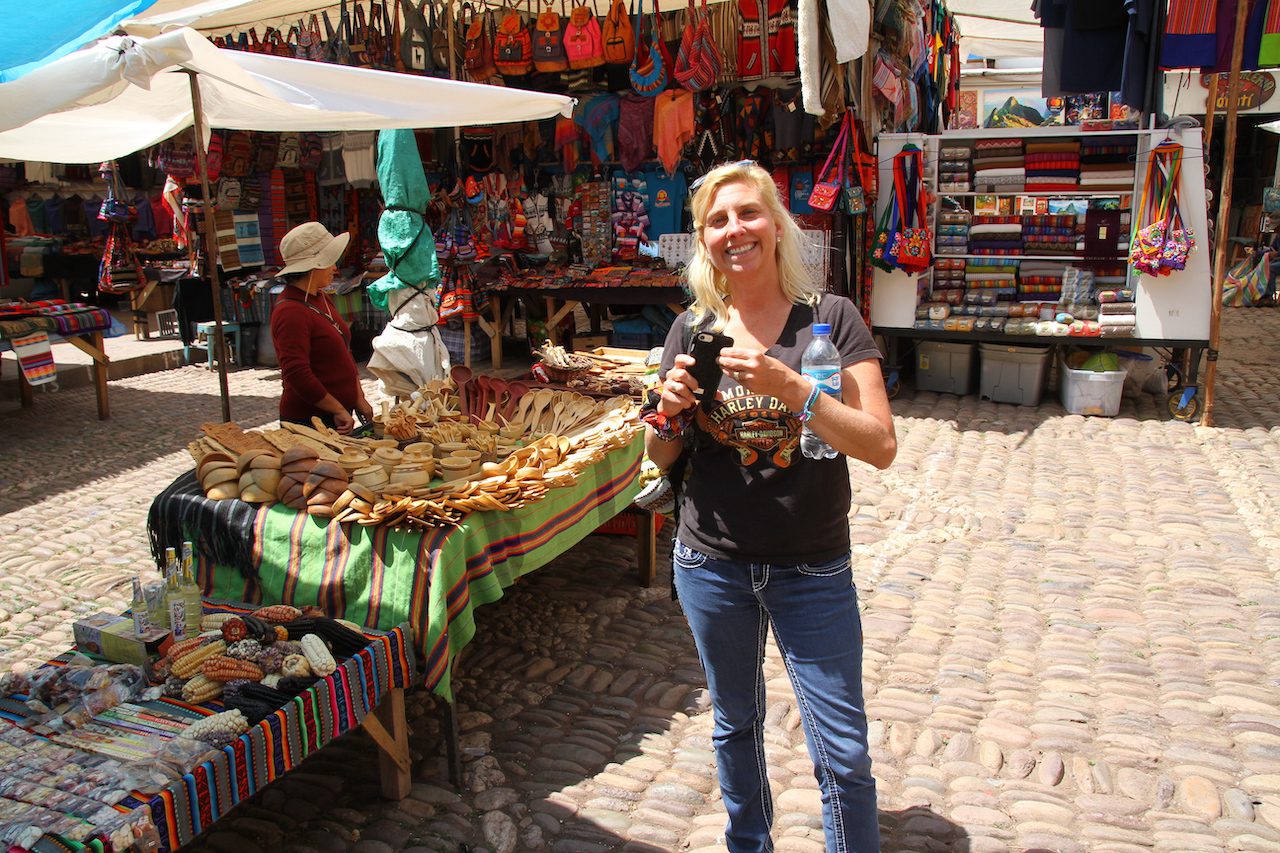
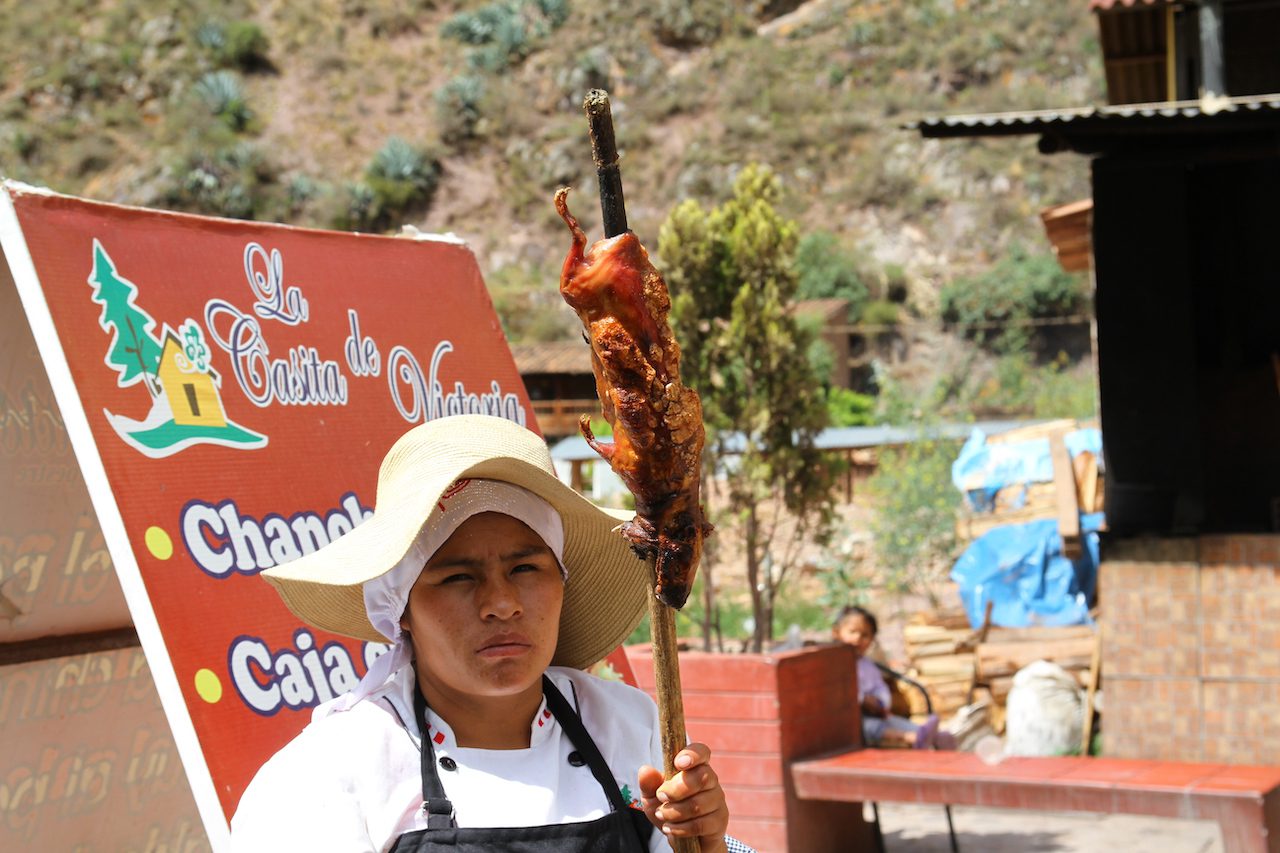
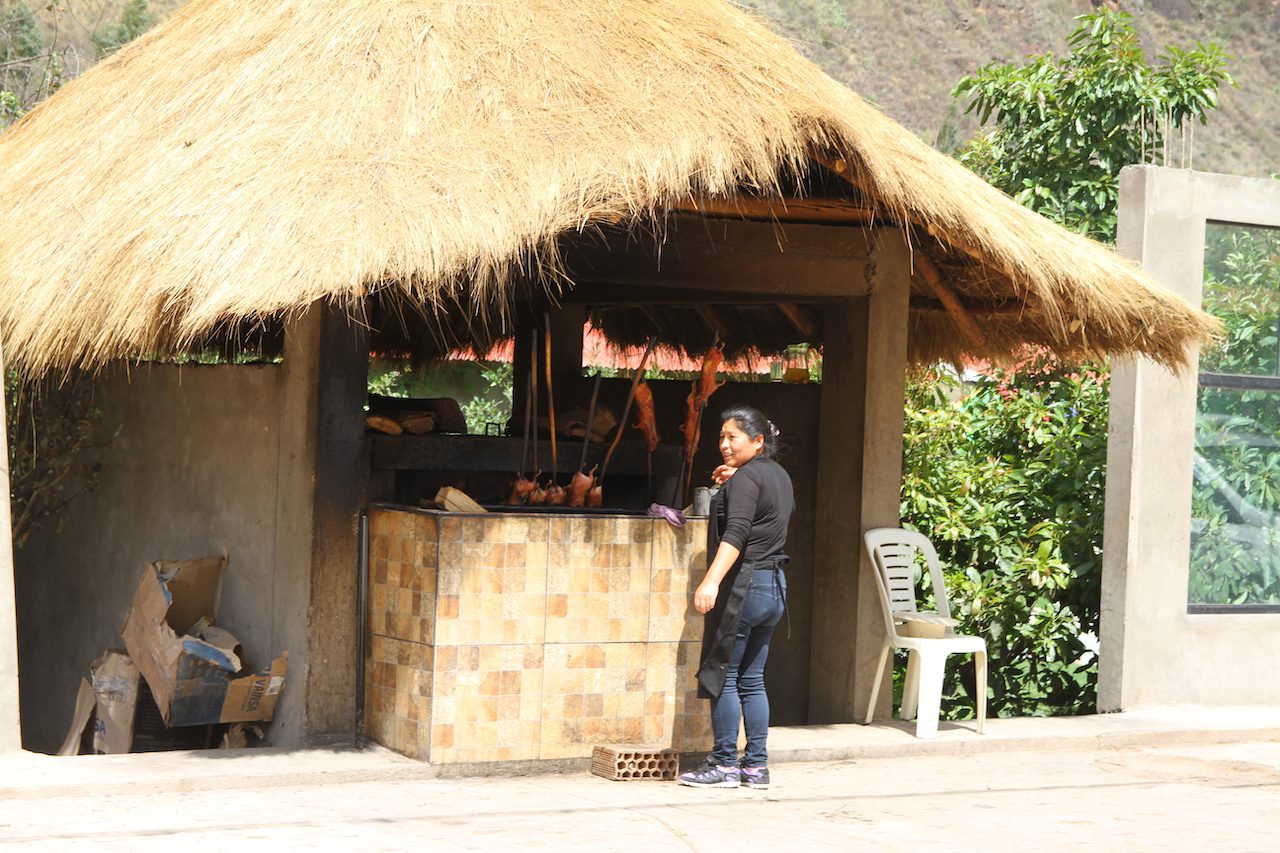
We continued our drive to Ollantaytambo Ruins – This spectacular Incan ruin was both a fortress and a temple. Today, the site is remarkably well-preserved and its relics an attraction in their own right. The site was also the location of a famous and rare Inca victory over the Spanish conquistadors in 1536. Skulls could be visible from some of the tombs.
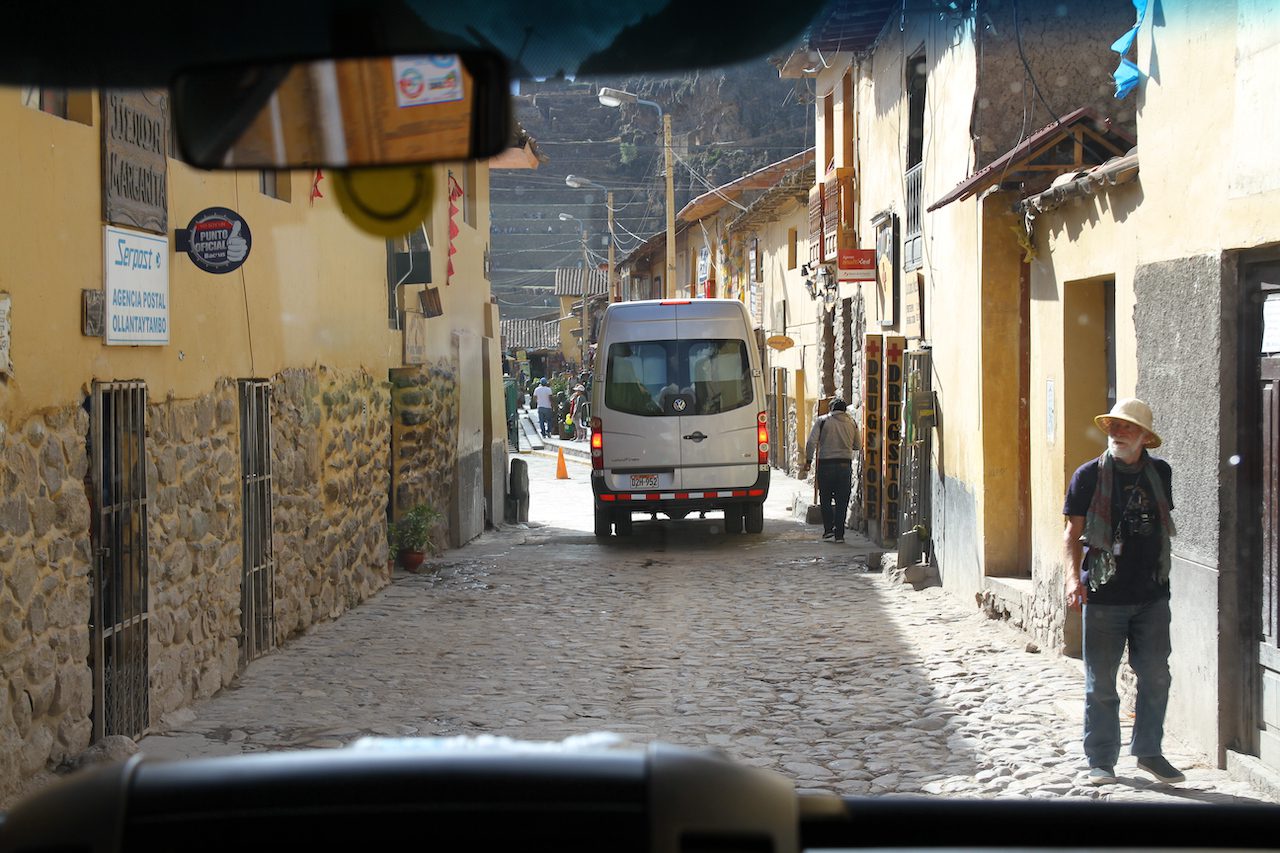
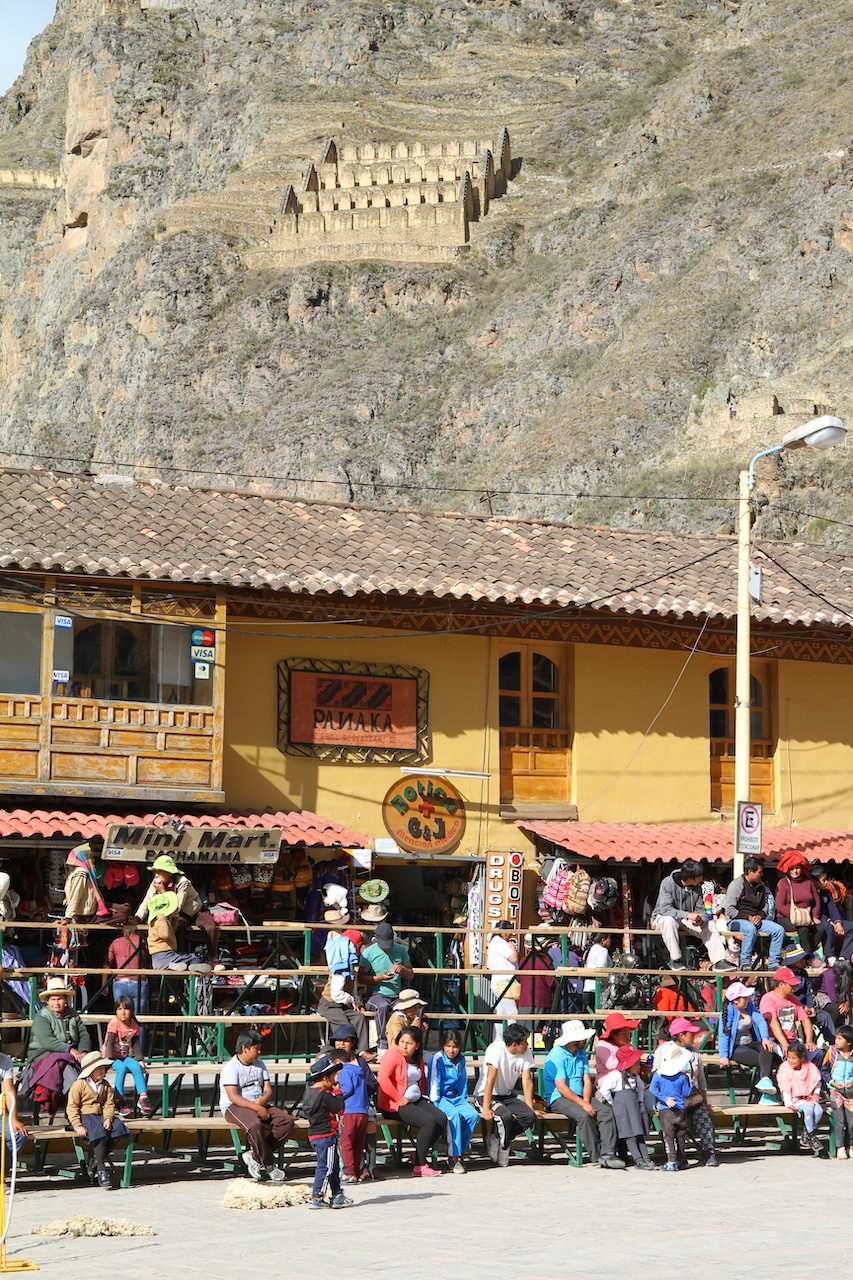
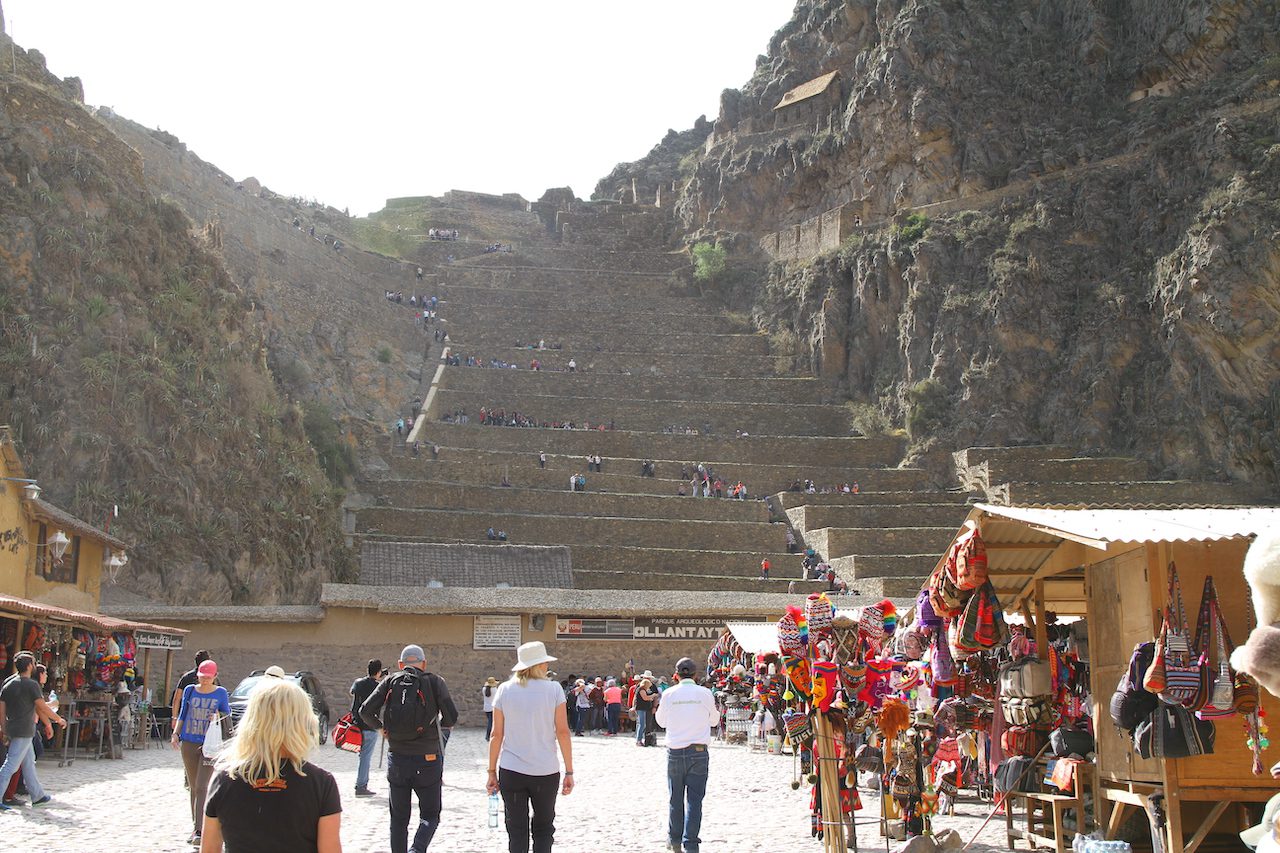
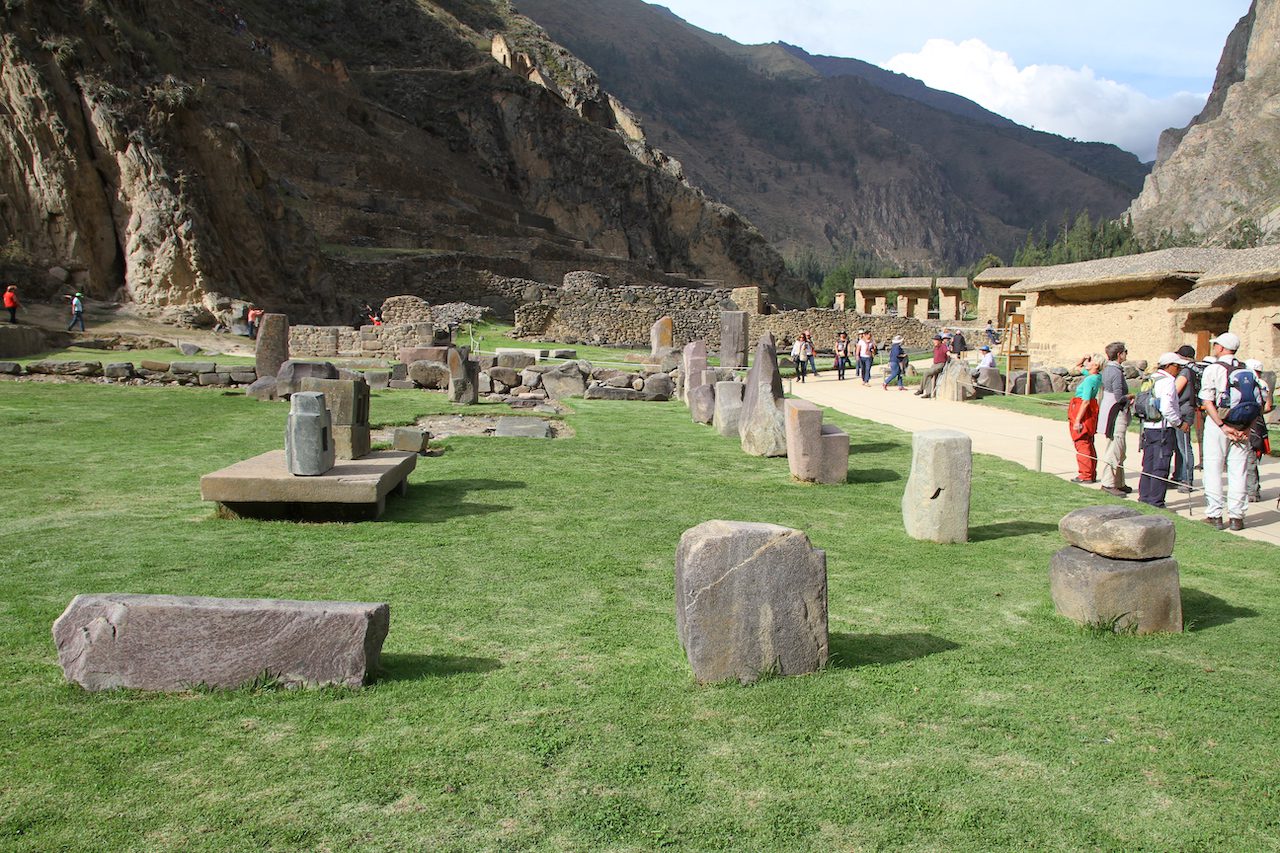
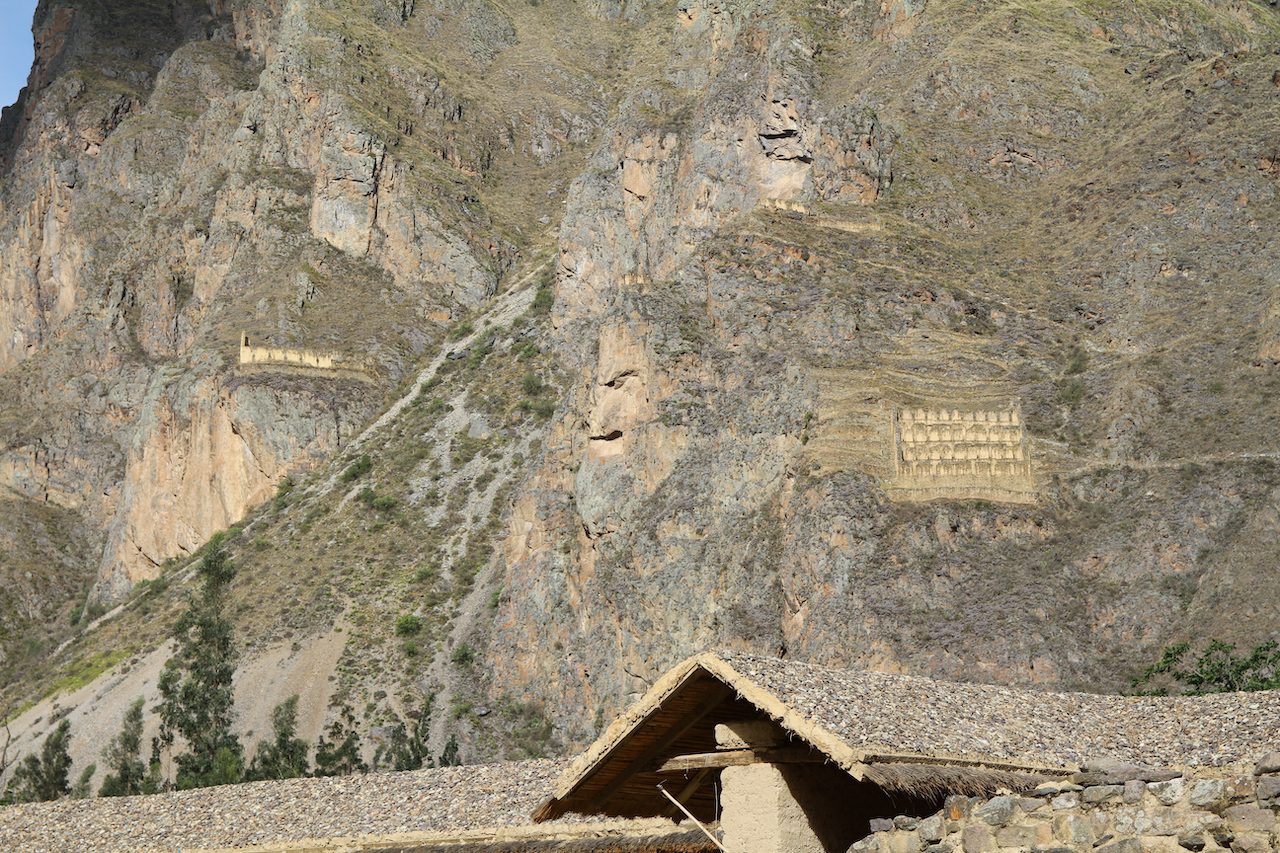
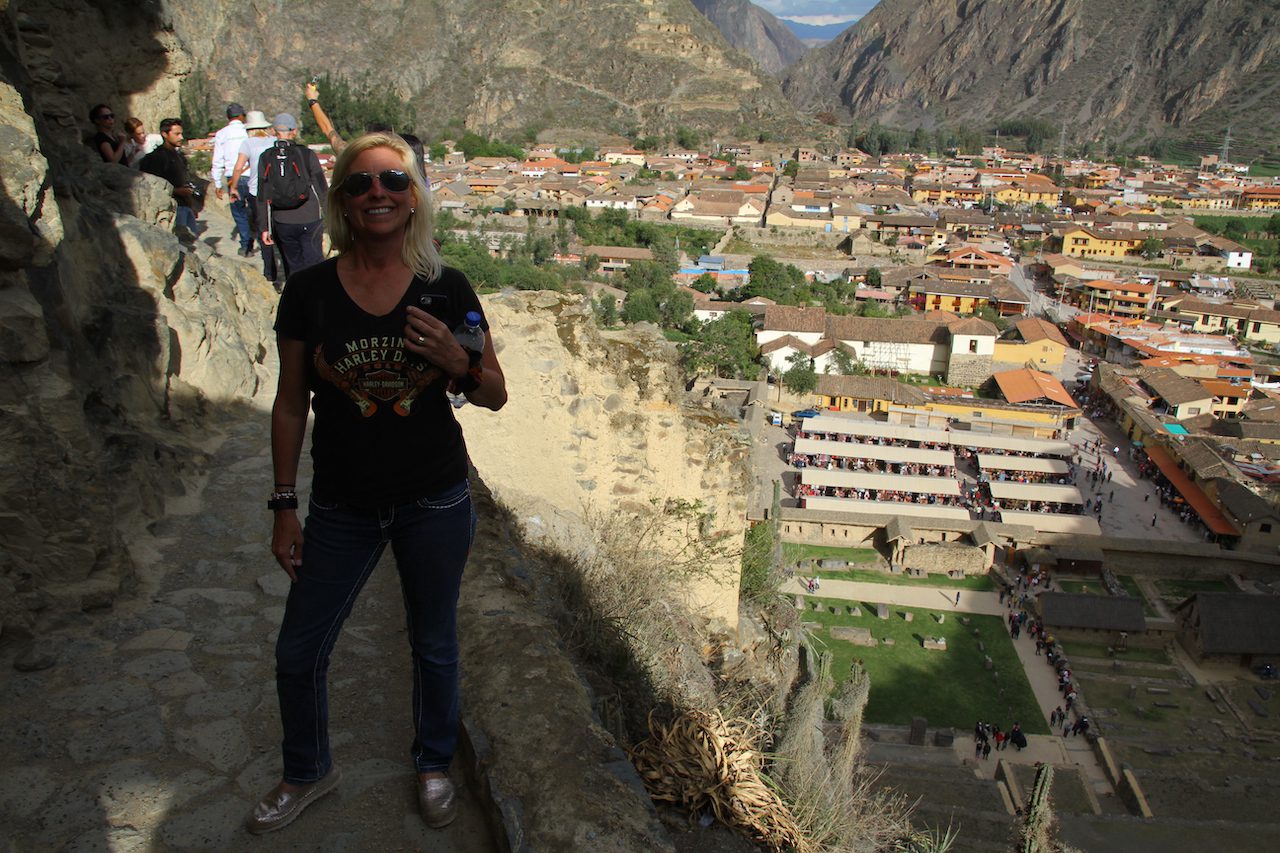
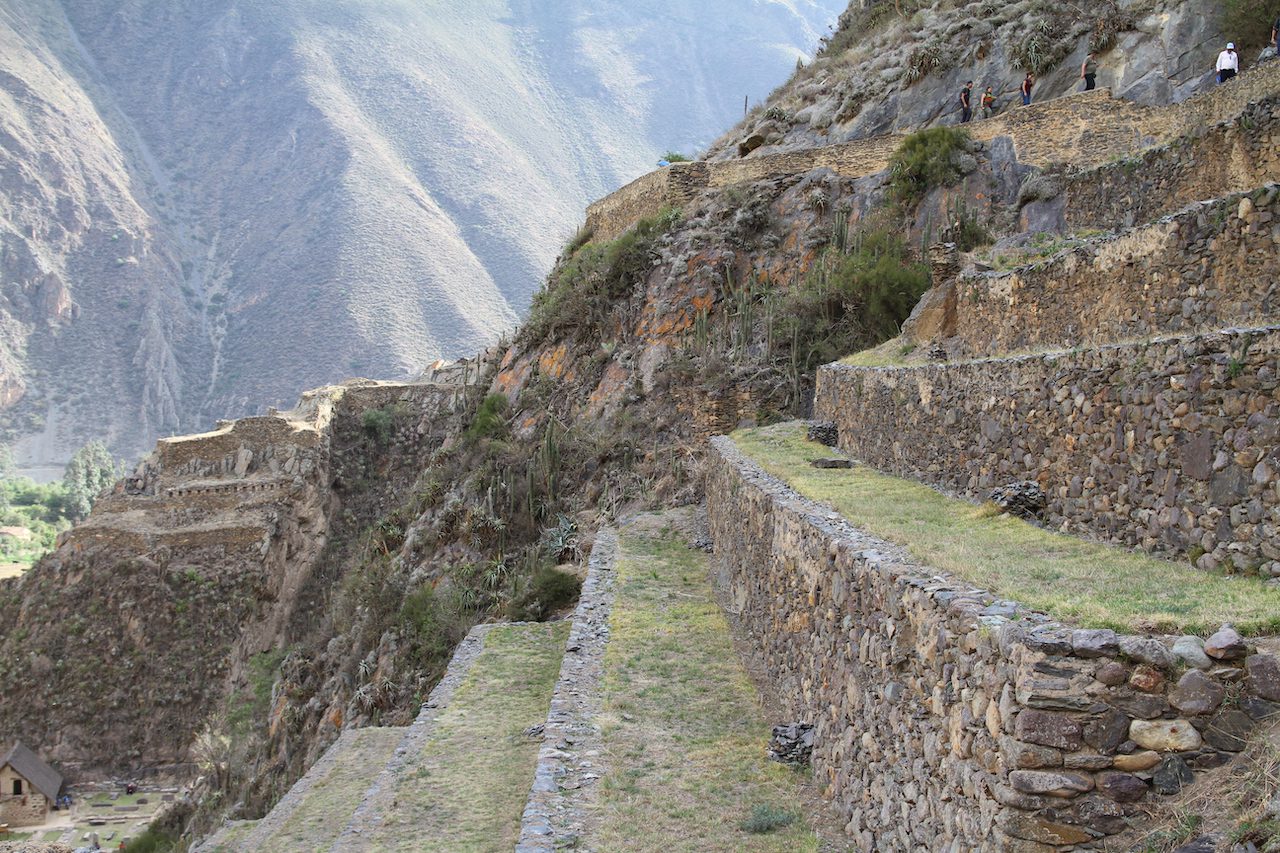
If you are up for adventure and thrill seeking you can do some rock climbing and stay at Skylodge Adventure Suites!
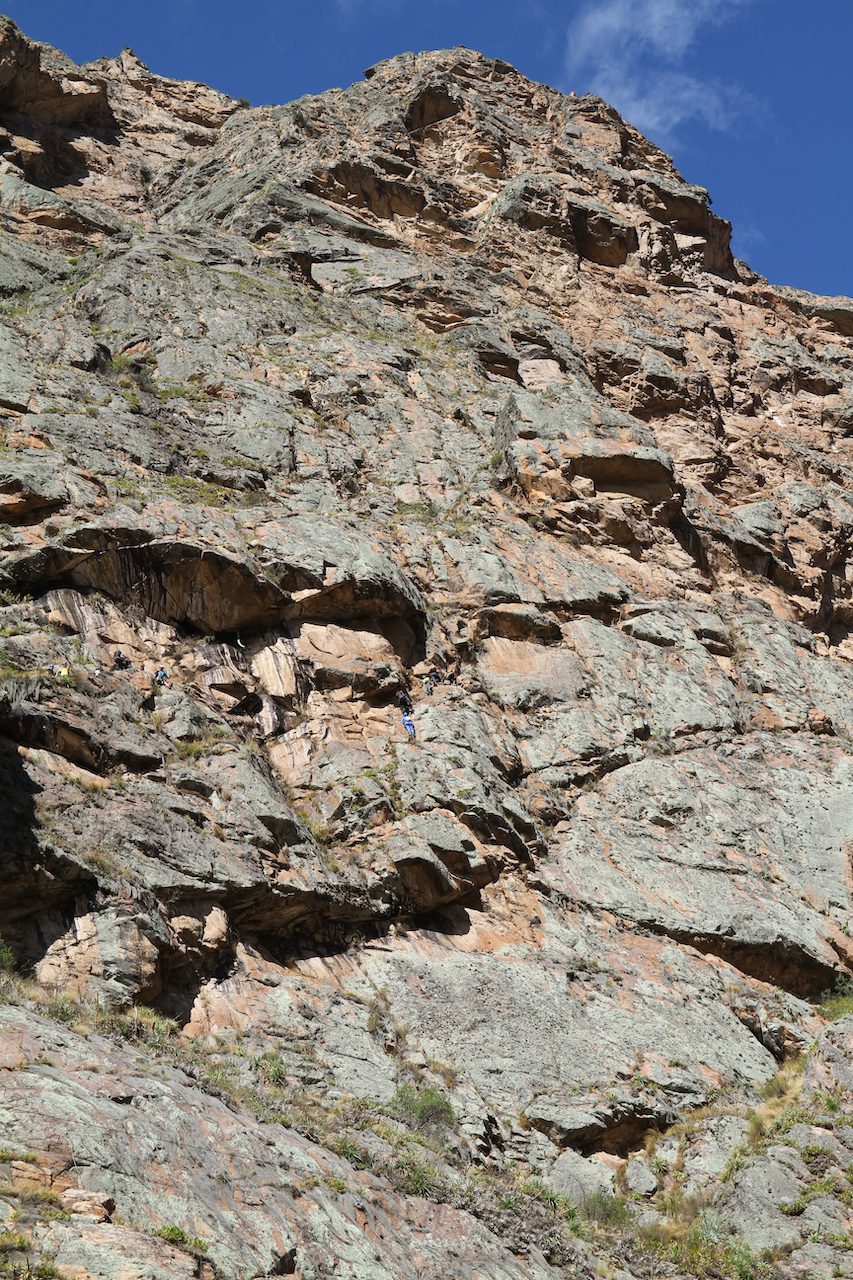
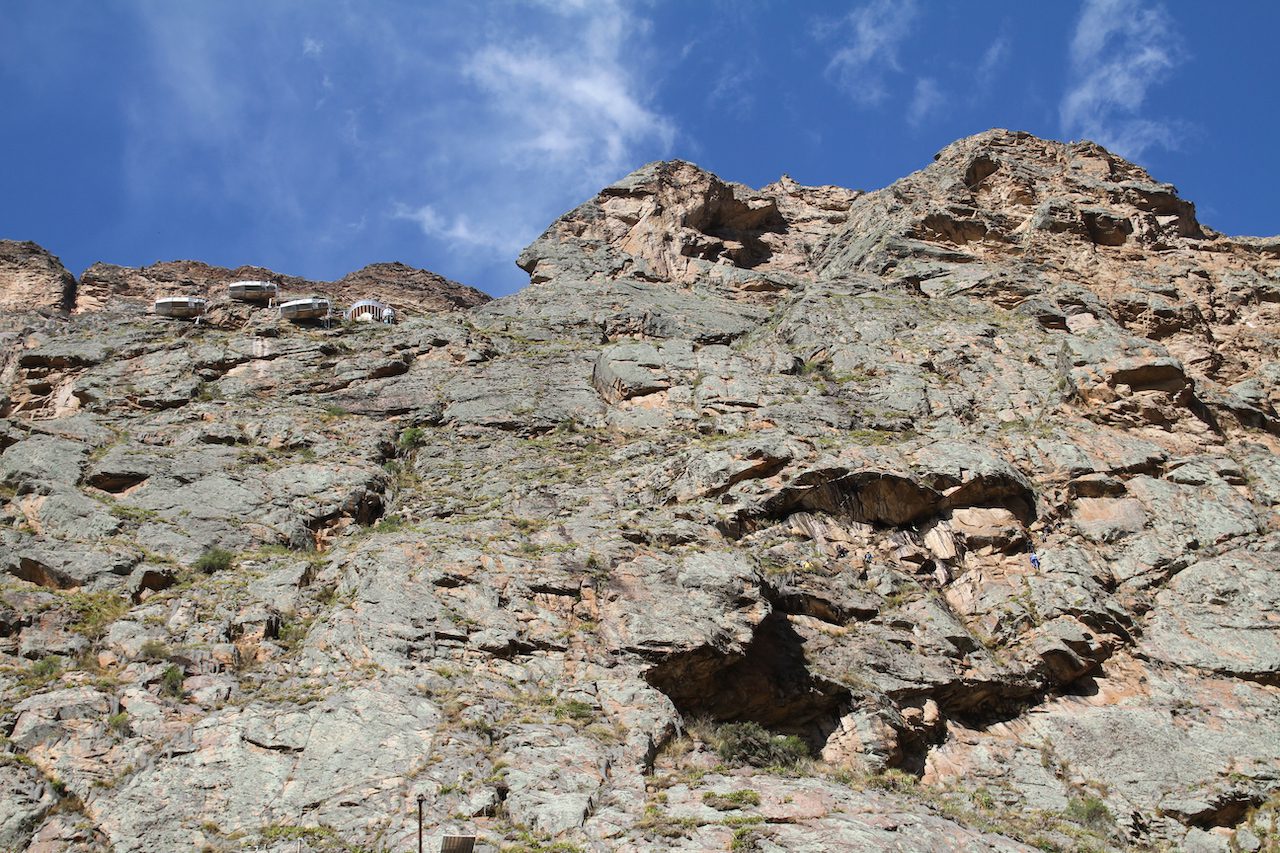
We headed back to Palacio del Inka. A Shaman came to meet me in the atmospheric outside area and read my coca tea leaves…very positive reading and I am surrounded by love 🙂 Apparently I have a strong masculine energy! Too tired to go for dinner so ordered room service and had an early night as we would be leaving at 2am to climb Rainbow Mountain the next morning!
Go To: Rainbow Mountain
Go to: Inca Trail & Machu Picchu
After the Inca Trail completed we had a day back at Cusco and enjoyed another day tour with Alpaca. Tony and Nessy decided to pull out and have a day of rest in Cusco. We stopped off for some fermented maize!
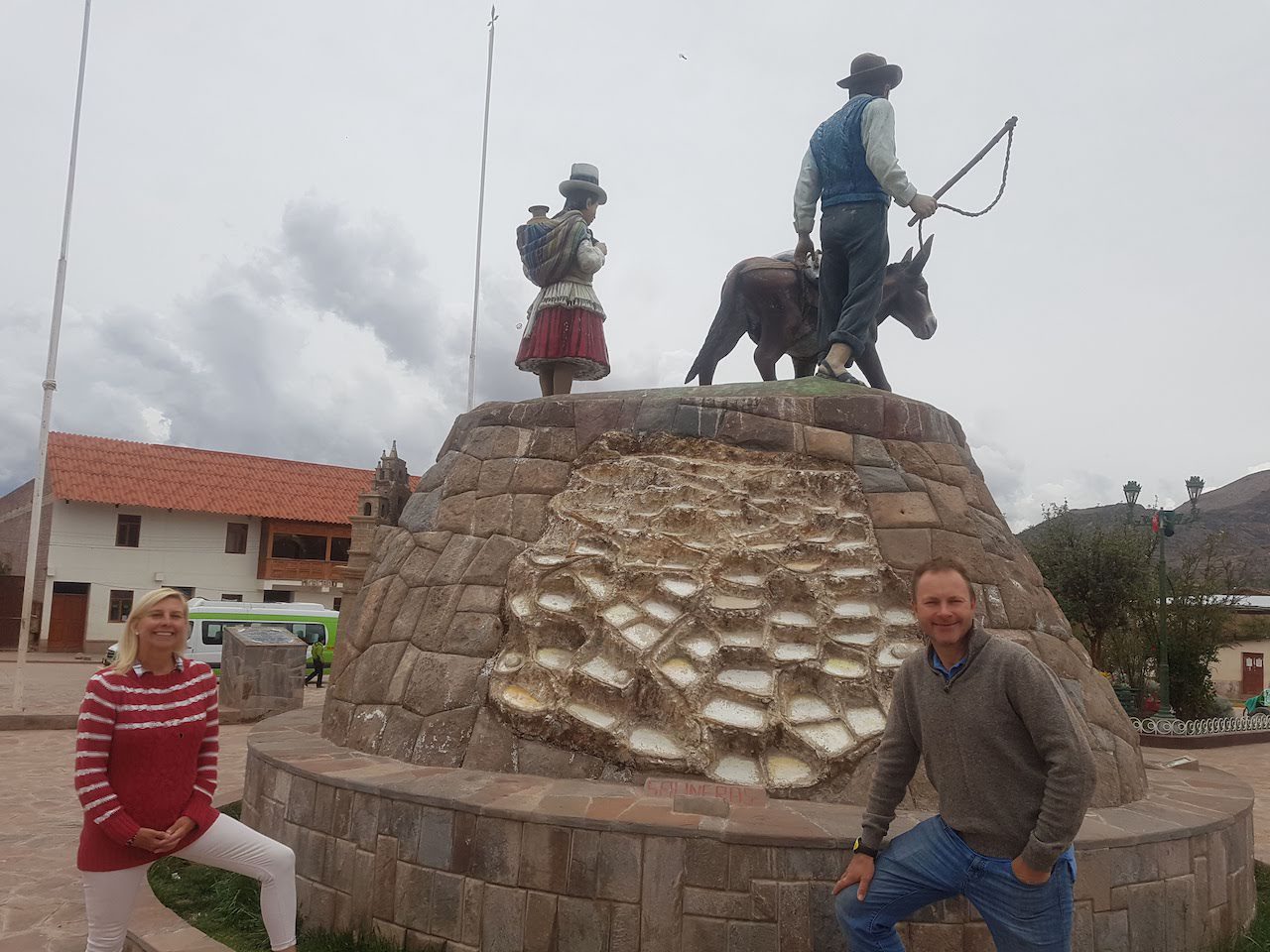
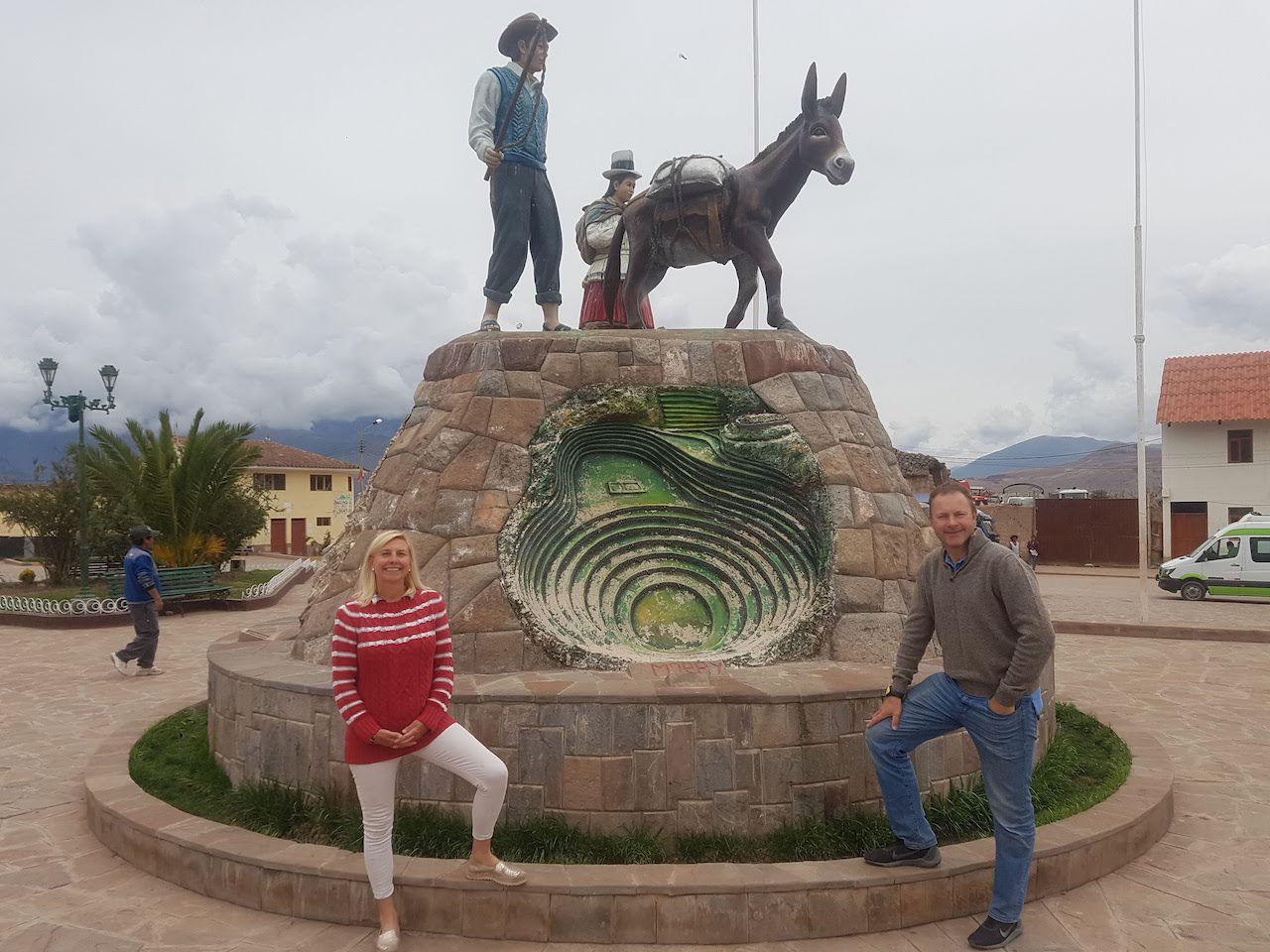
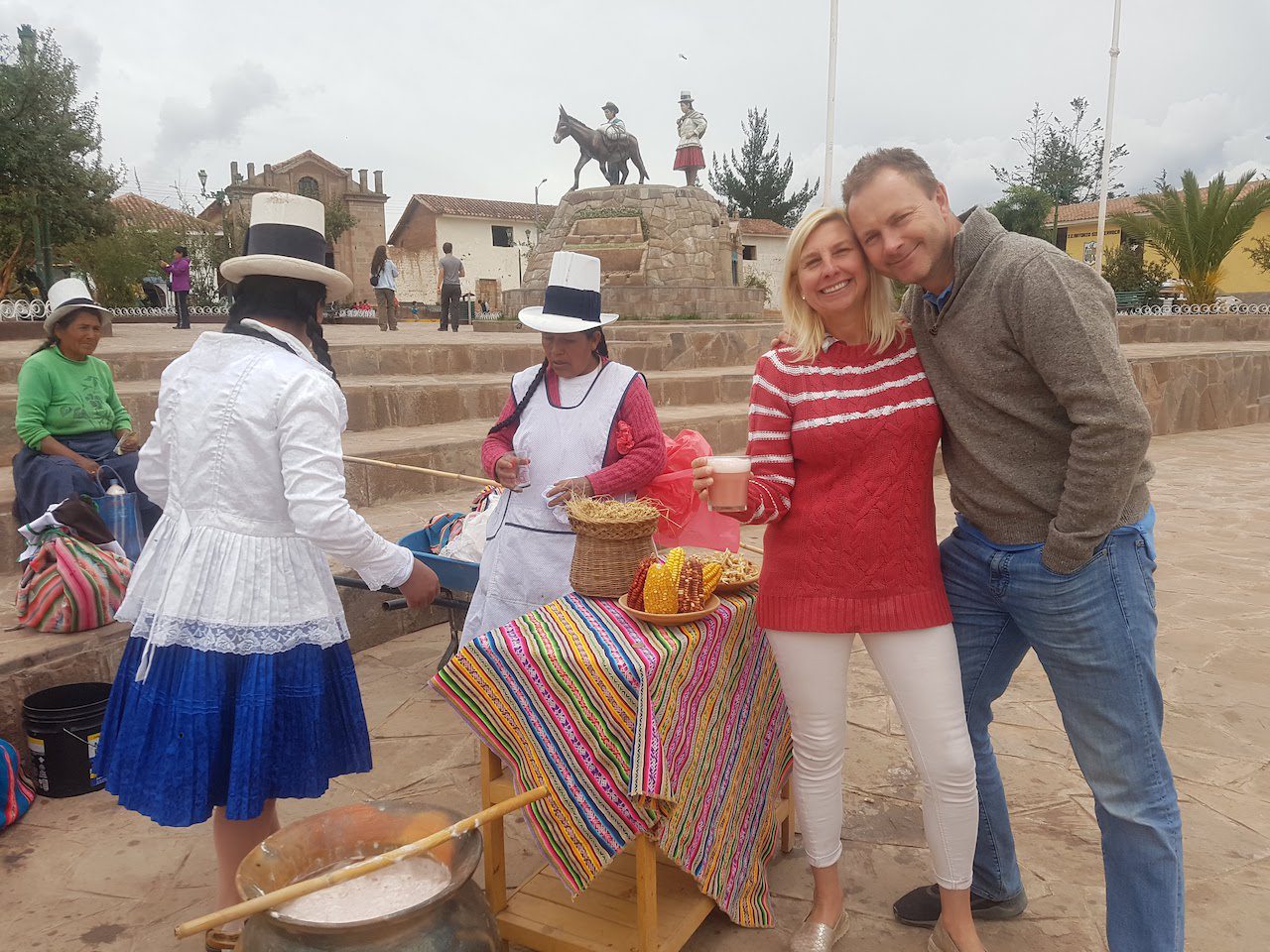
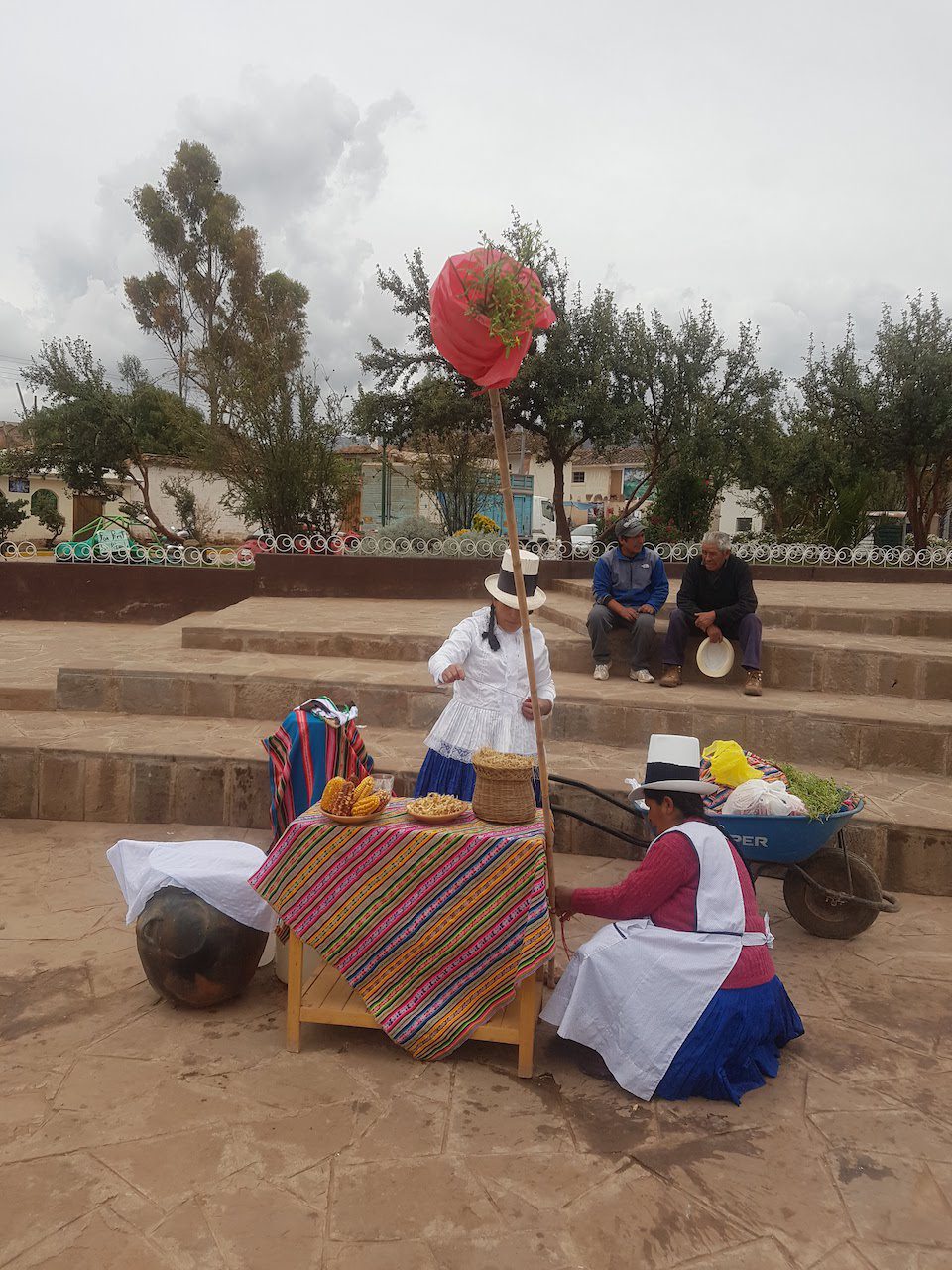
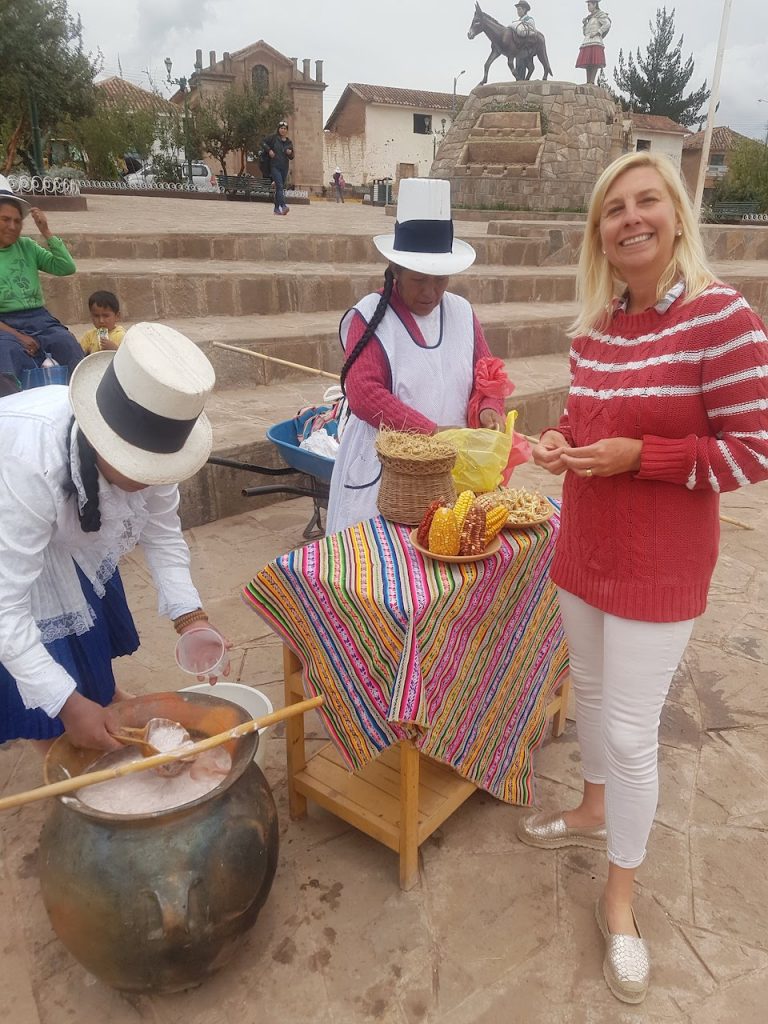
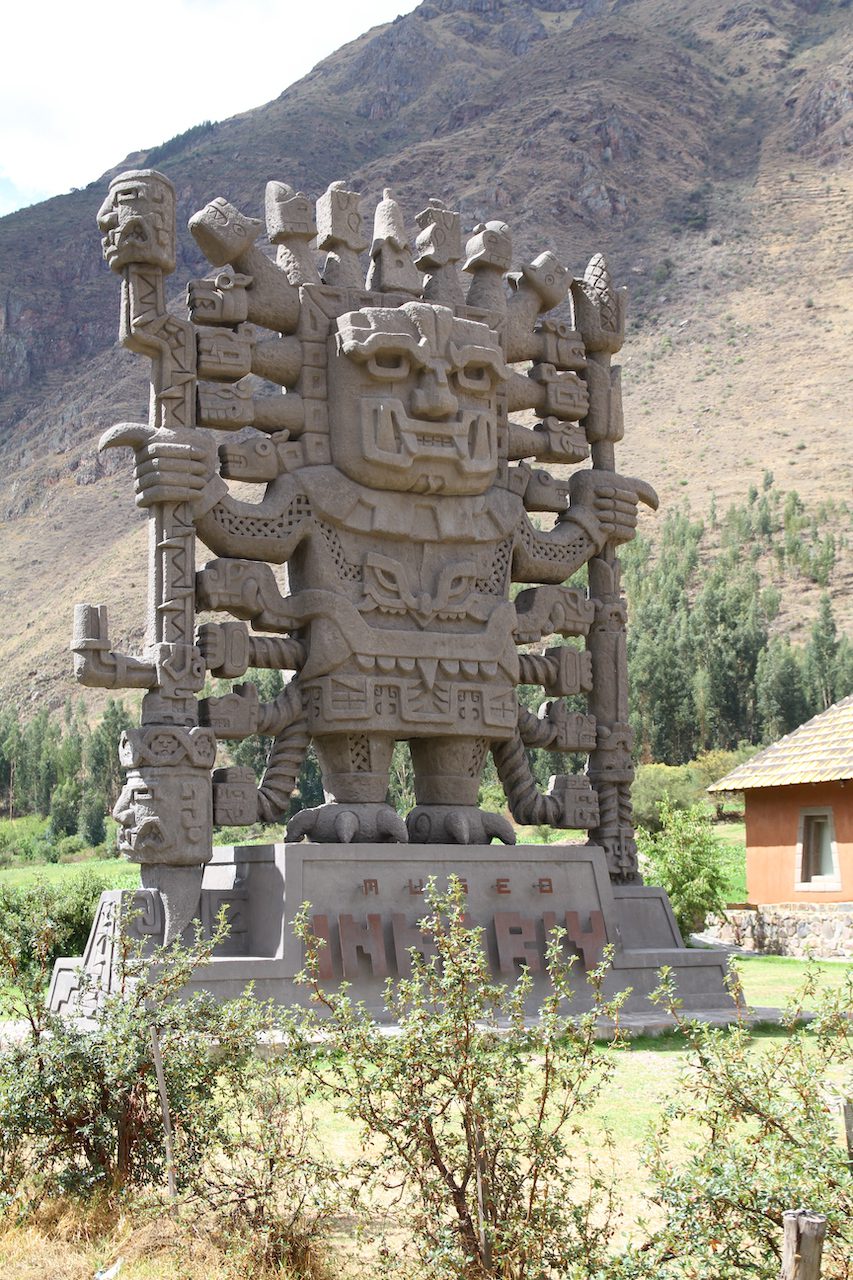
Moray Ruins: This impressively deep amphitheater-like site is believed to be a former agricultural laboratory of the Incas. The concentric terraces allow for various micro-climates to exist in once place. This allowed the Incas to discover the optimal growing conditions for various crops and played a role in the development of the more than 4,000 varieties of native potatoes that exist in Peru today. It is composed of three groups of circular terraces (muyu) that descend 150 meters from the highest terrace to the lowest. Each muyu has 12 levels of terraces with the largest depression having a diameter of 182m.
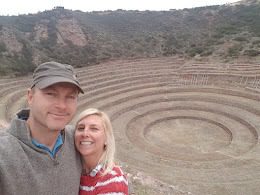
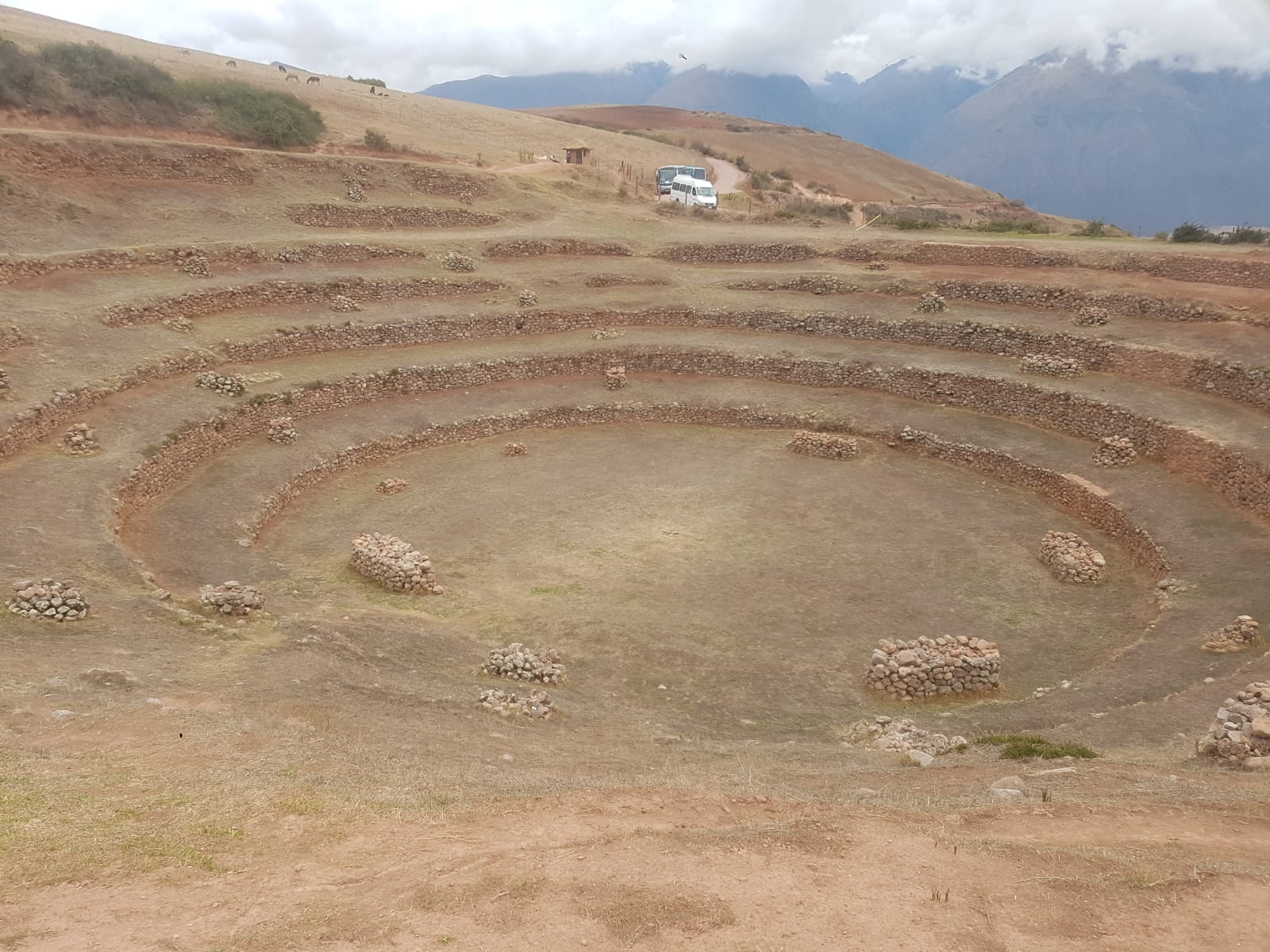
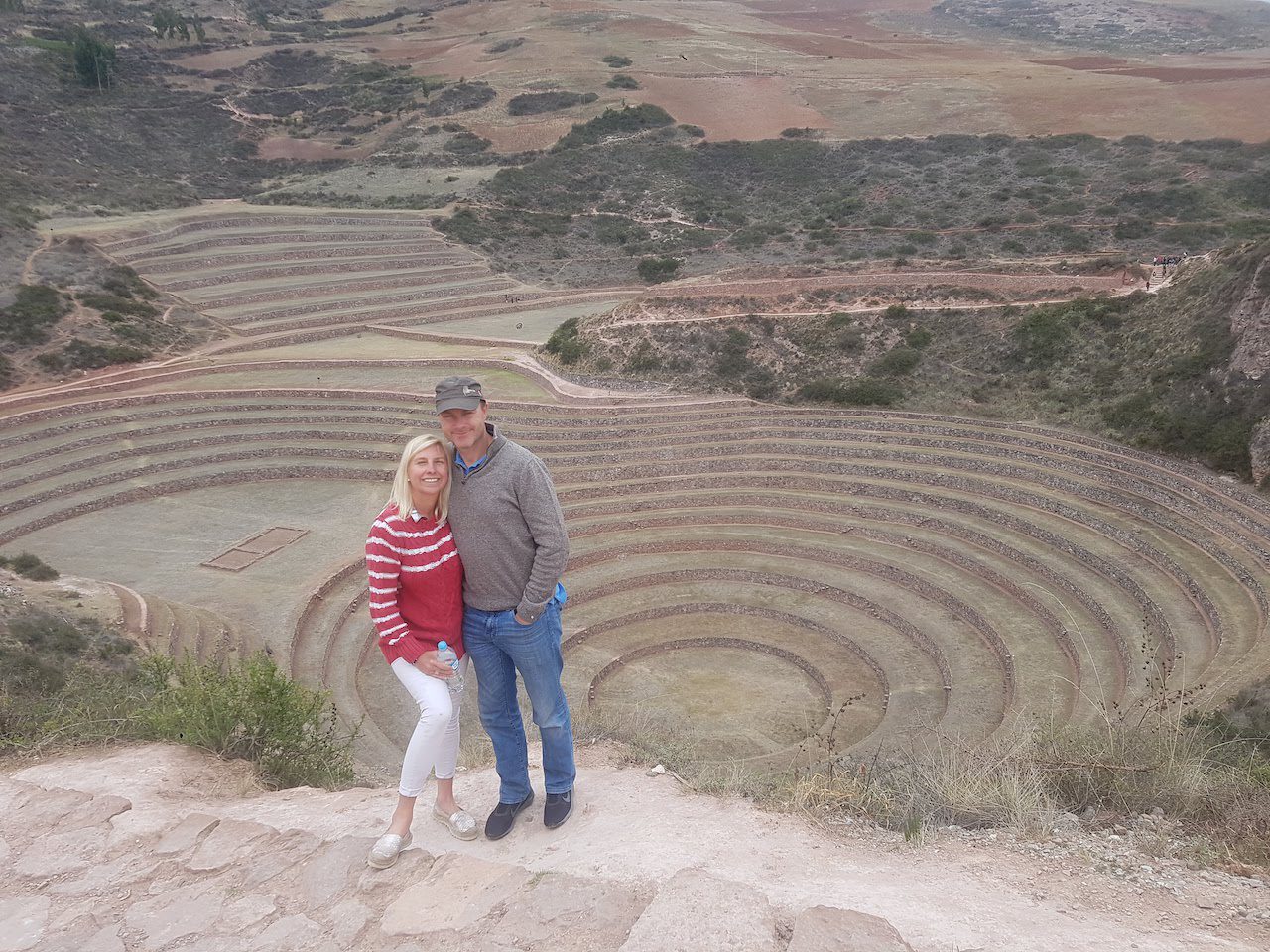
Maras is well known for its salt evaporation ponds, located towards Urubamba from the town centre, which have been in use since Inca times.

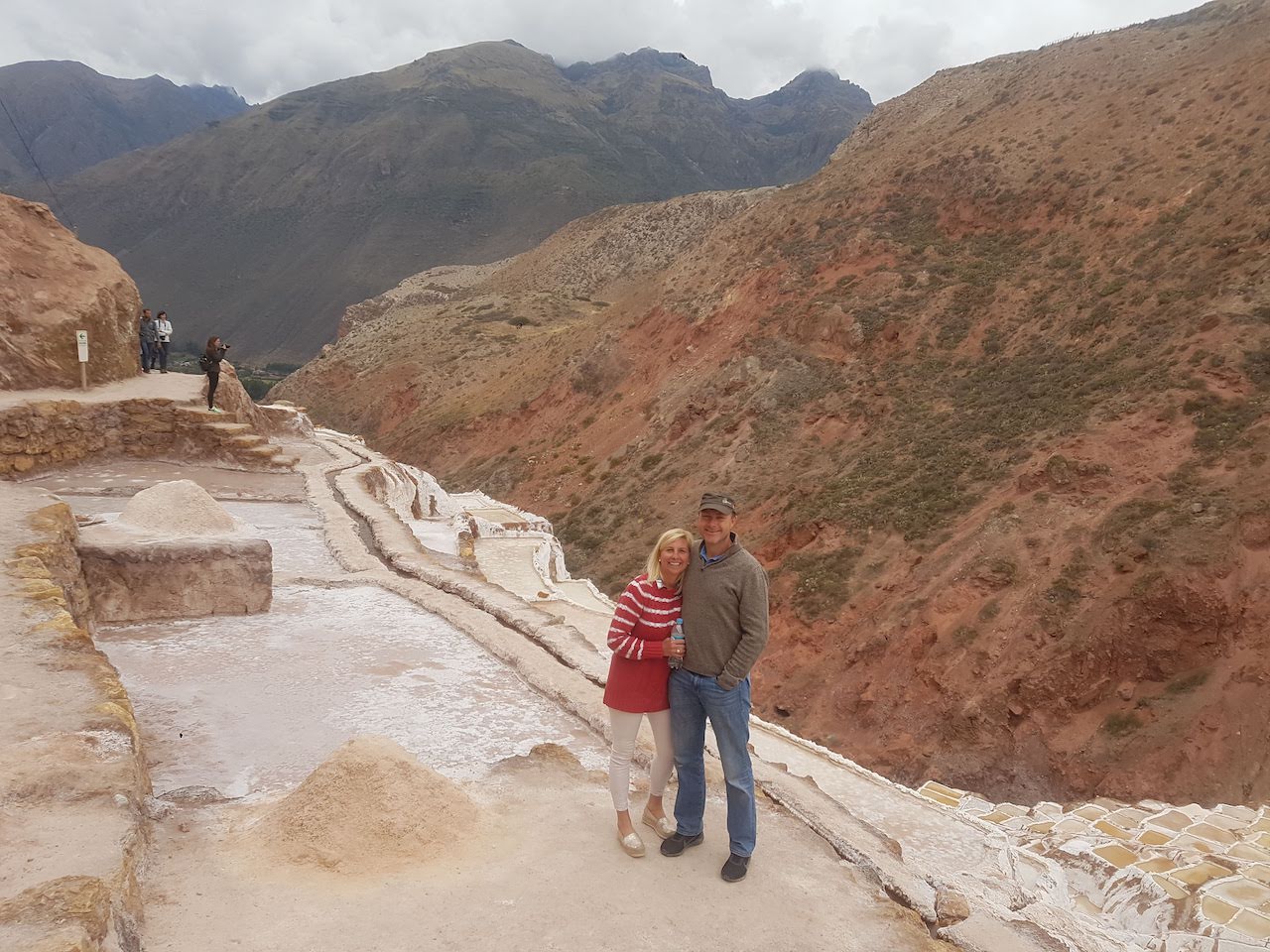
We also did a quick visit to the ruins at Sacsayhhuaman and Q’enko which are not far from Cusco.
The Sacsayhuaman was a major Inca storage depot where arms, armour, foodstuffs, valuable textiles, ceramics, metal tools, and precious metals were kept. We actually found this to be one of our favourite ruin sites and really enjoyed strolling around and imagining what it must have been like in Inca times. They built dry stone walls constructed of huge stones. The workers carefully cut the boulders to fit them together tightly without mortar. The site is at an altitude of 3,701m.
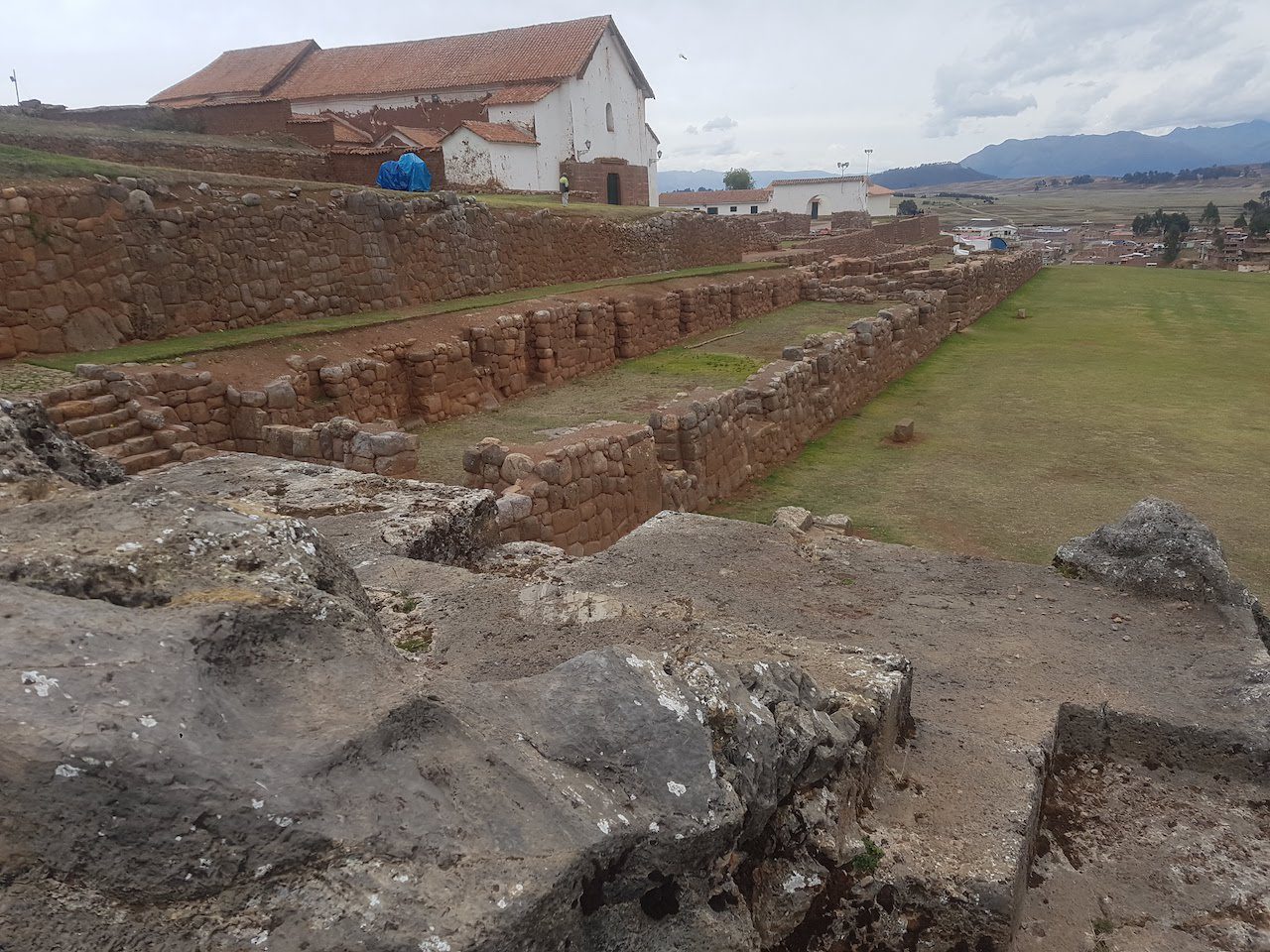
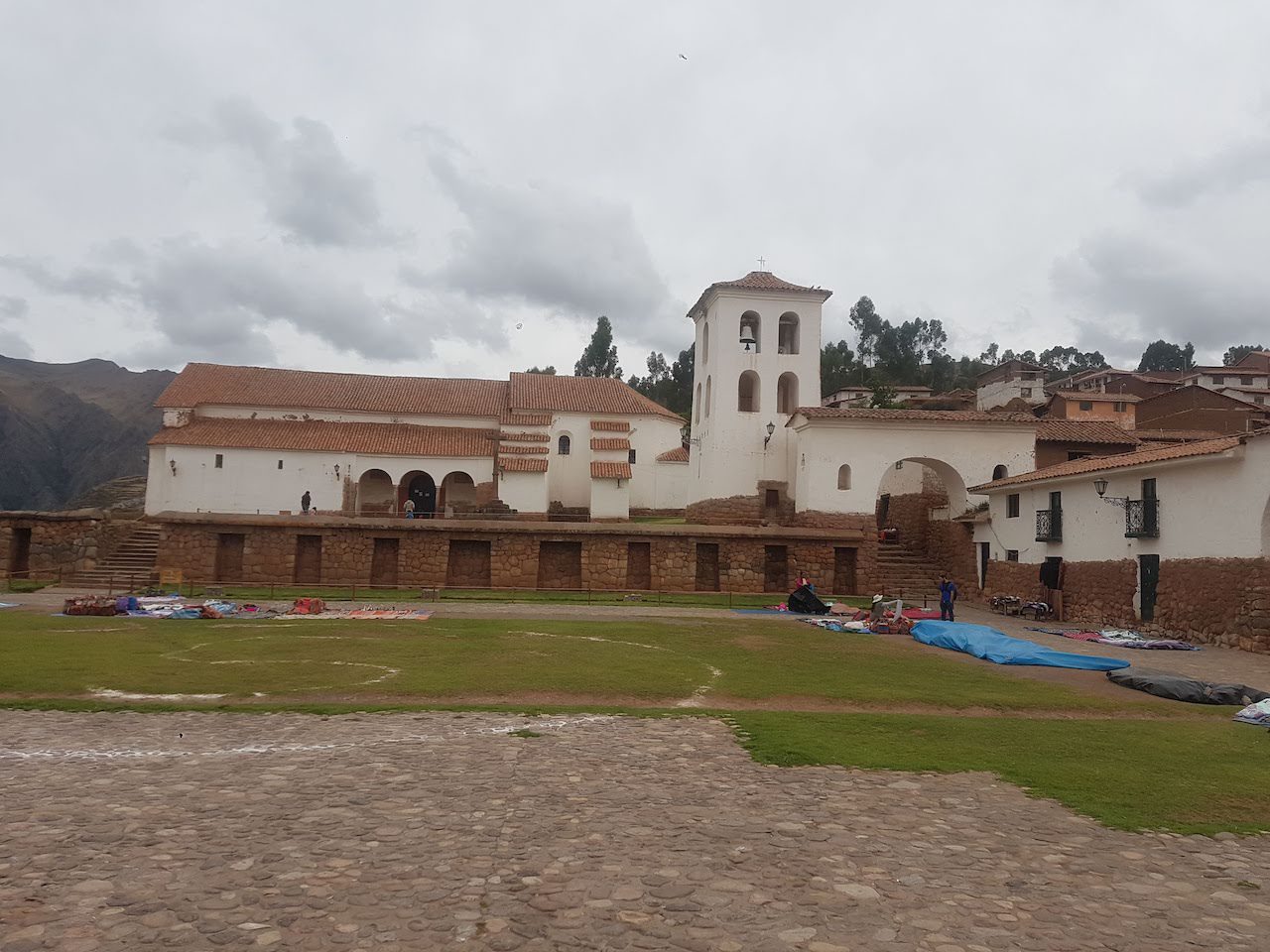
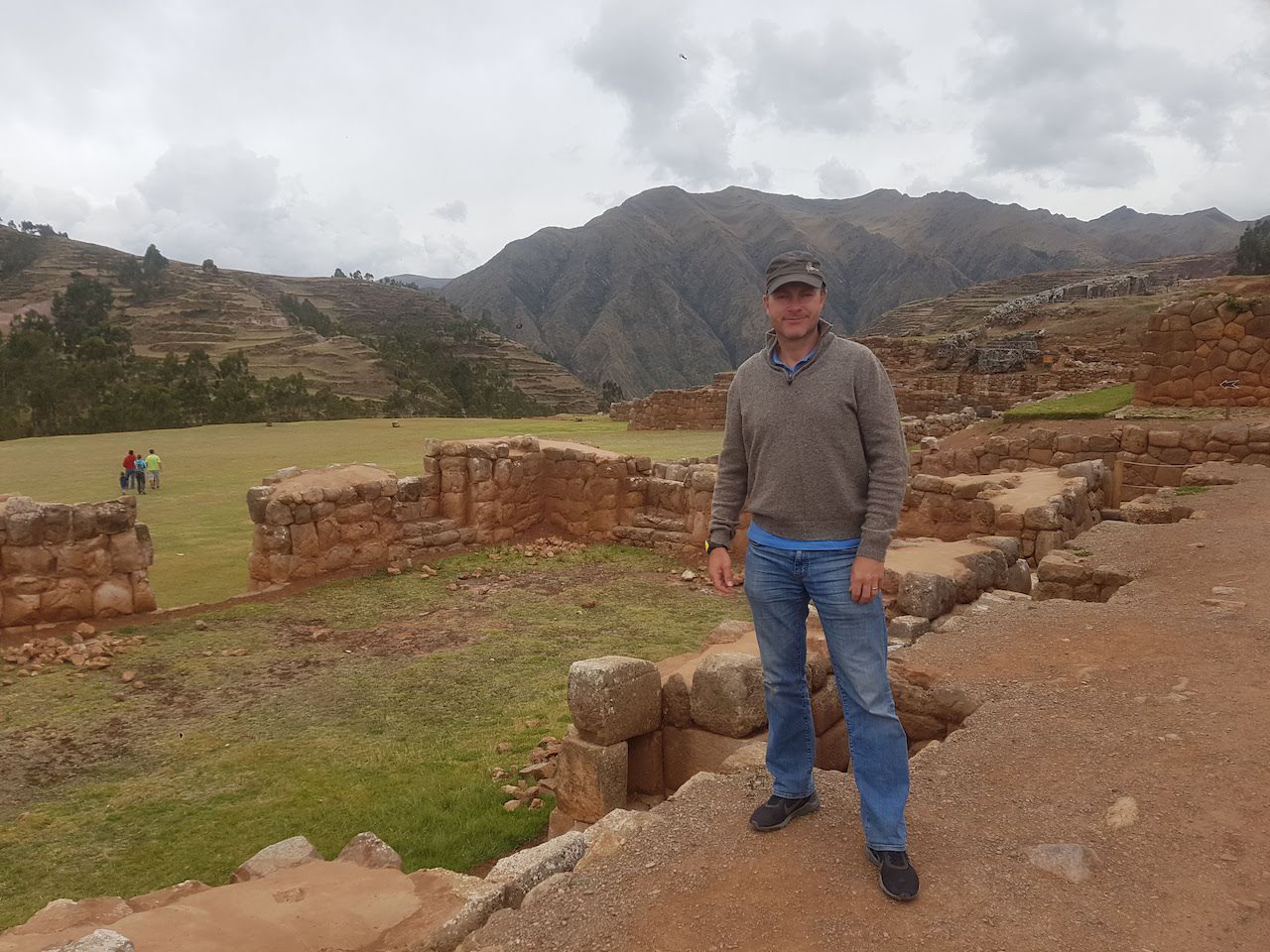
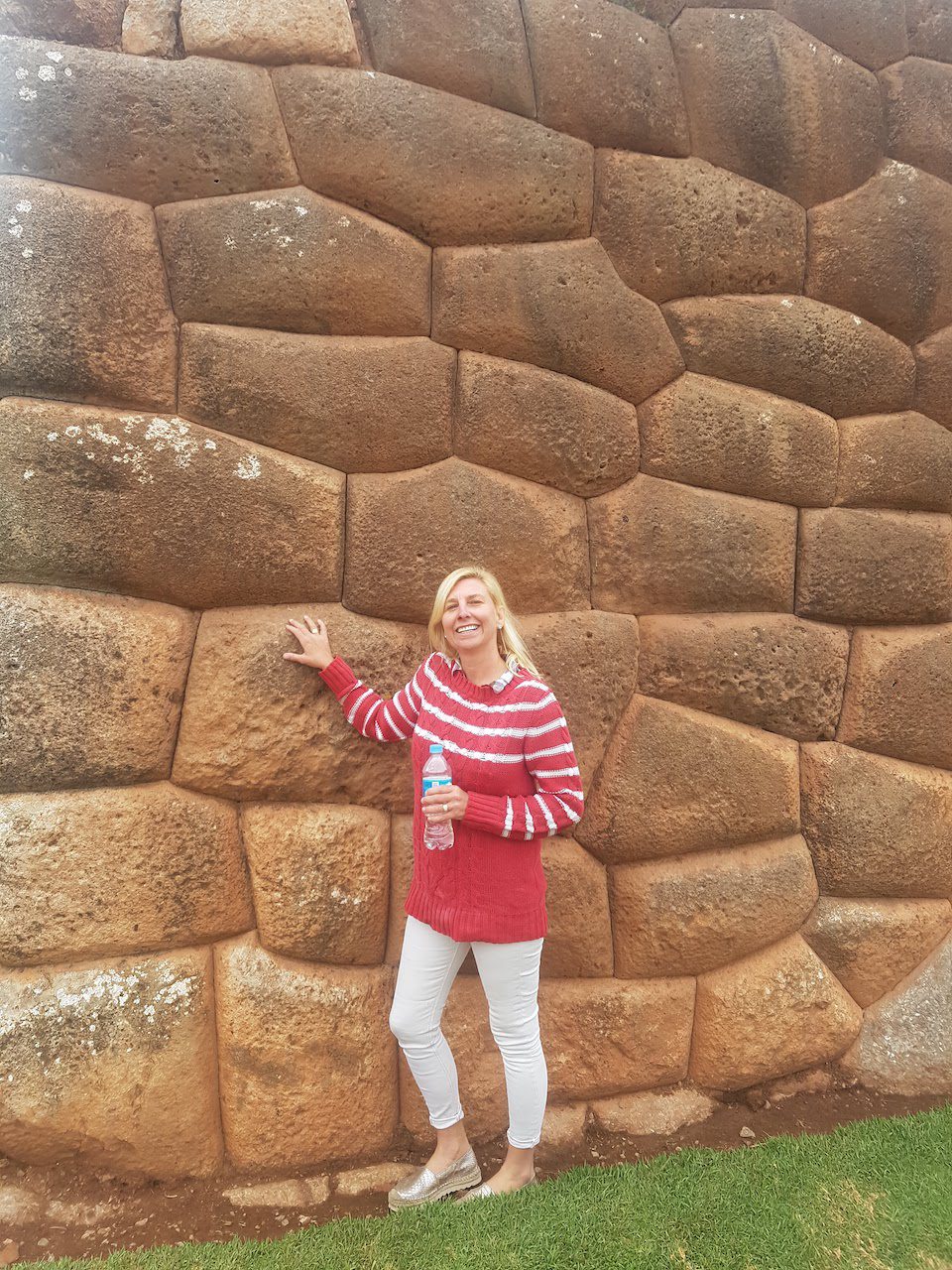
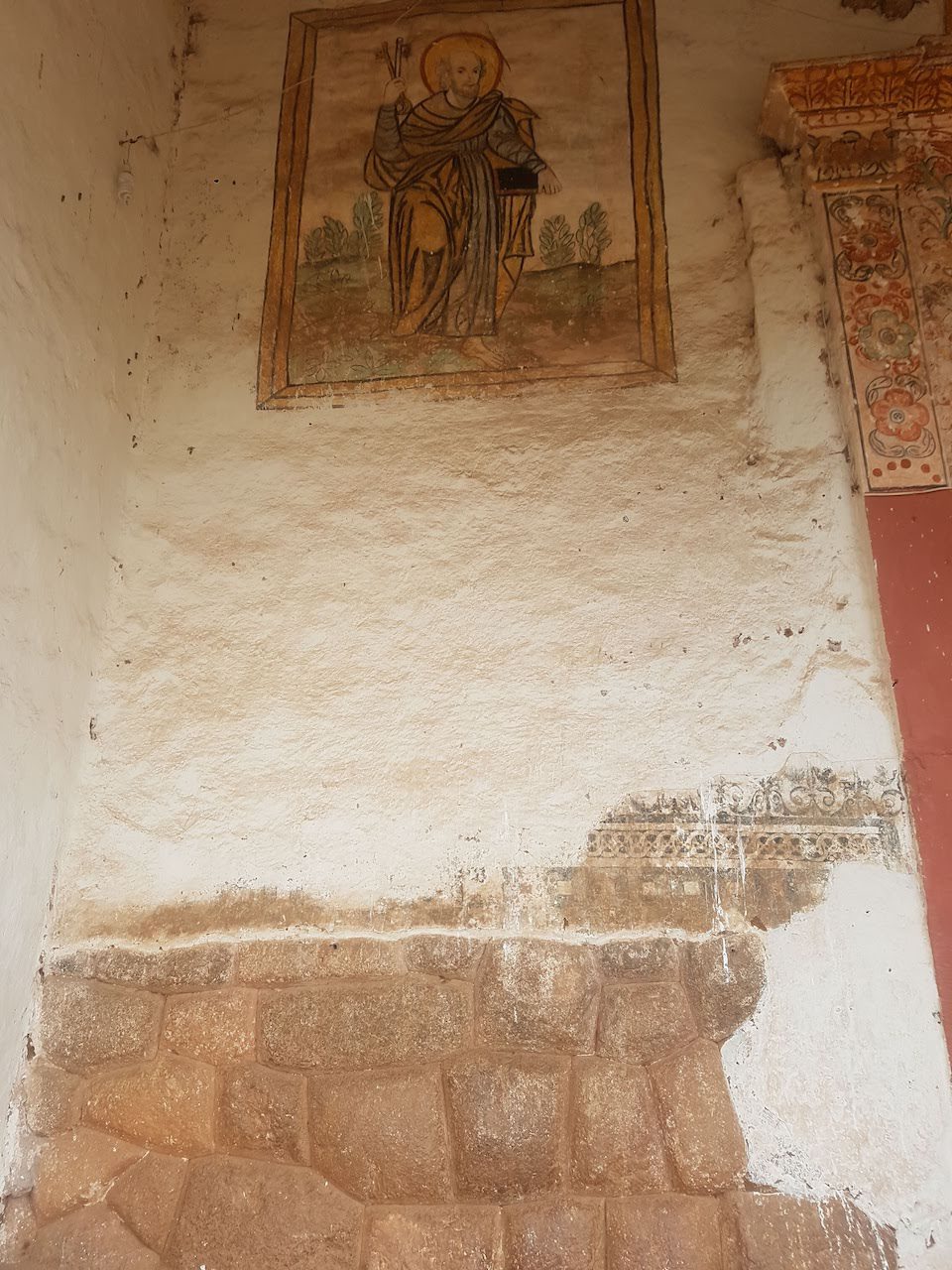
Q’enko was an Ancient Inca Religious Site – again really interesting. The alter was a bit creepy as one could just imagine the horrors of sacrificial rituals being performed here. The Great Rock is 100m long. This gigantic stone has deep carvings on it. On the rear part it has carved stairs leading to its top and visitors are allowed to walk up to the top of the rock. Carved animals shapes are still visible.

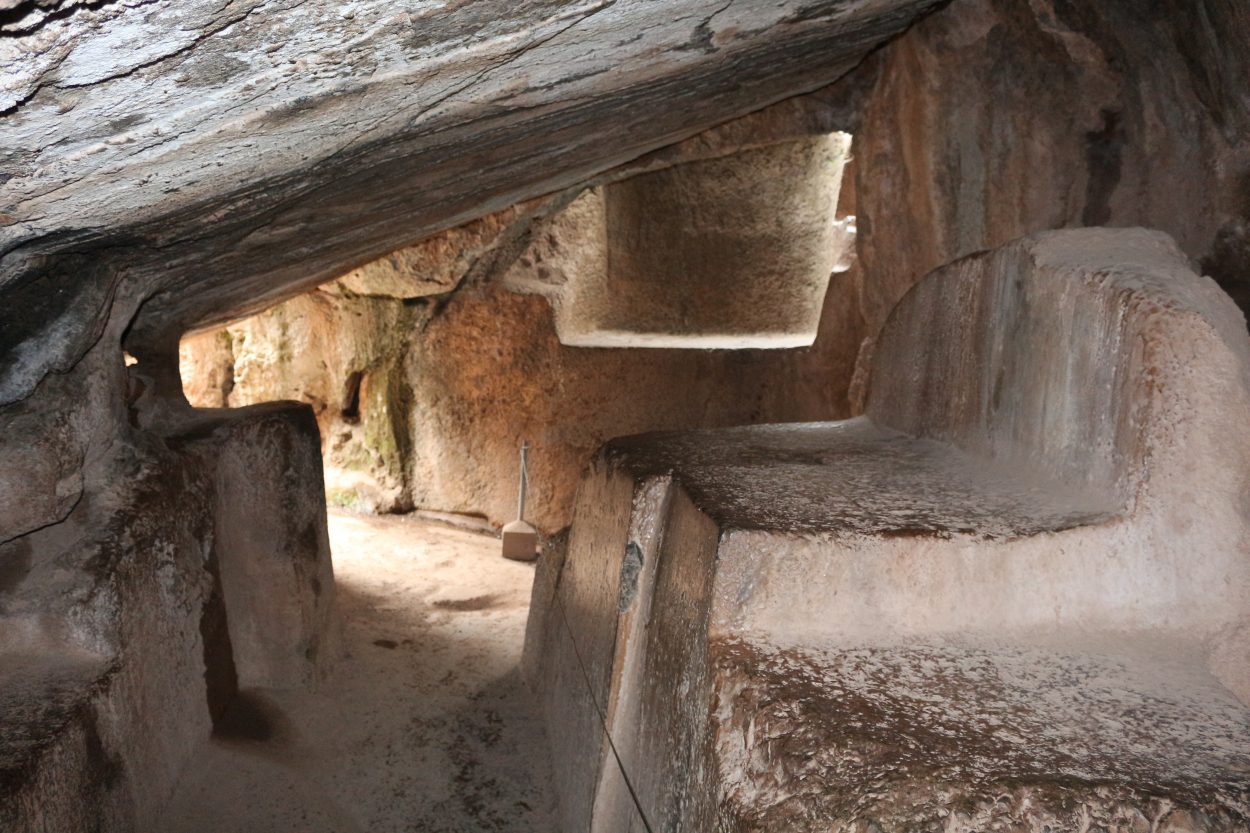
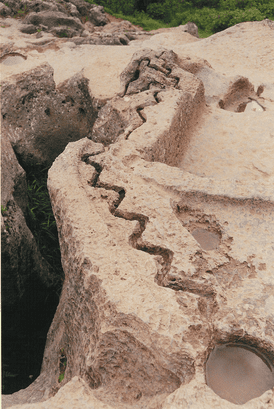
(Unfortunately both our cameras and my phone died during the Inca Trail and all the torrential rain but we managed to salvage a few from Paul’s phone). Before we packed we enjoyed a final pisco sour!
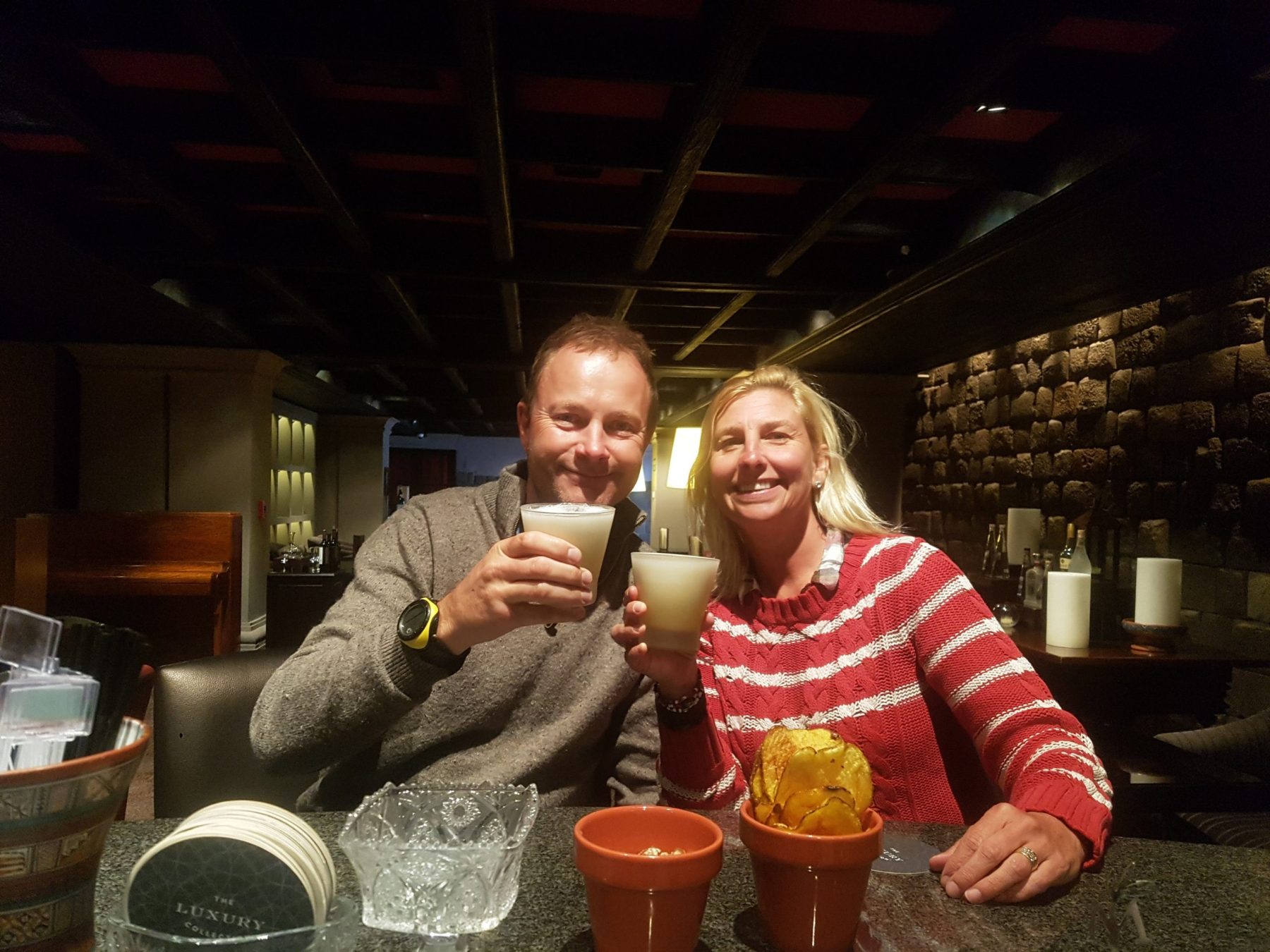
That brought us to the end of our amazing Peruvian adventure! We really had covered so much ground and had an awesome time but were looking forward to getting home to children and animals! On arrival at airport we waited as our flight was delayed – we were then told it was cancelled! So we had to buy new flights to Lima with minutes to spare and our luggage was already elsewhere to board the flight that was cancelled. After much panic we got all but paul’s bag back – unfortunately his bag was full of really expensive kit 🙁 (But on the positive our insurance did pay out, albeit it several months and many, many e-mails later!). We were almost late for our connecting flight but managed a swift glass of champagne in the lounge before boarding for home sweet home!
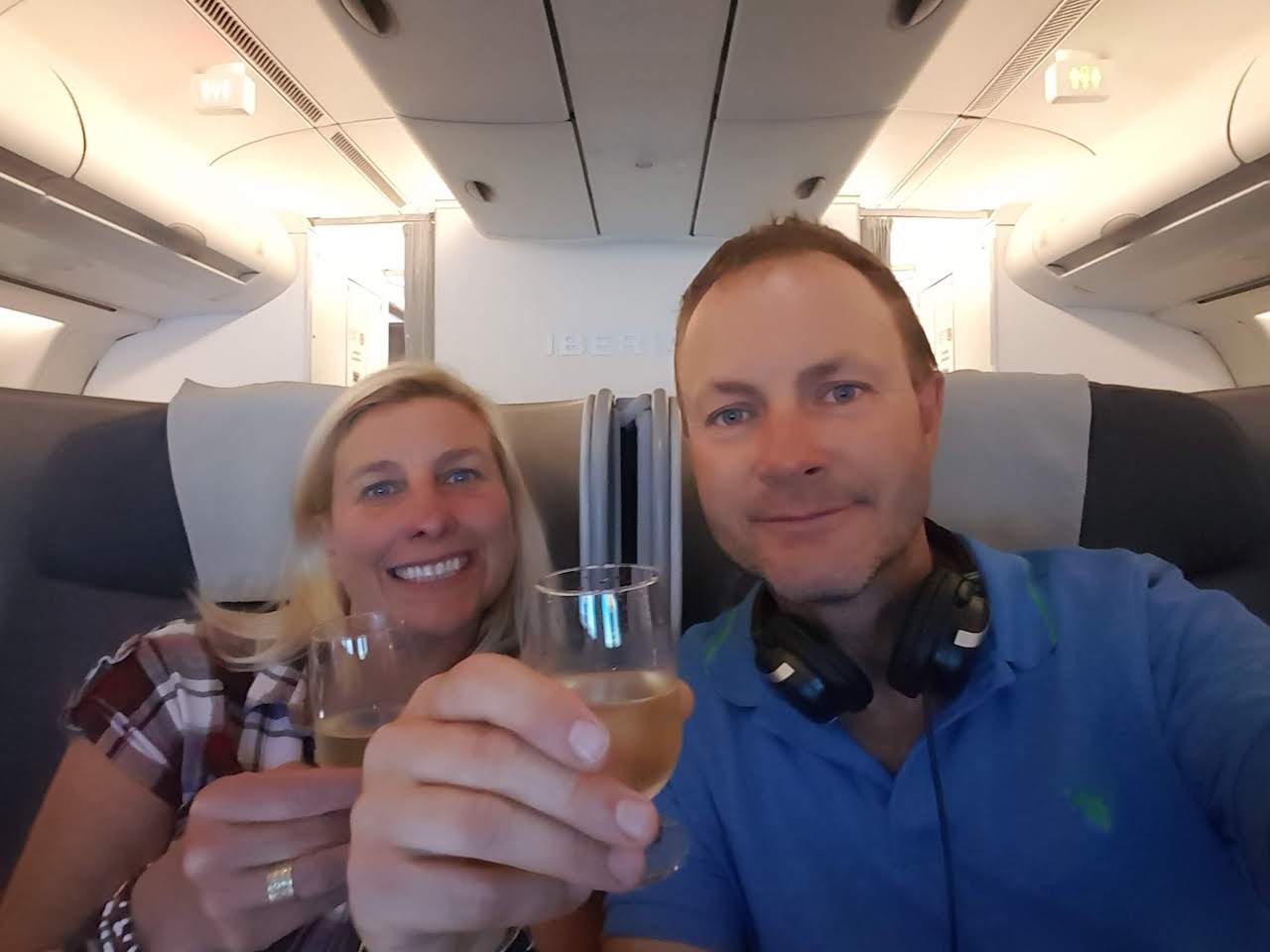
Go to Back to: Spirit of Andes

